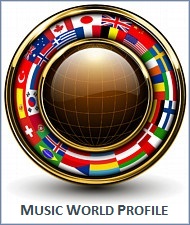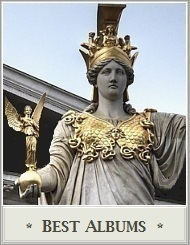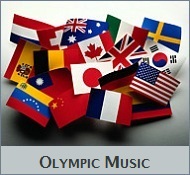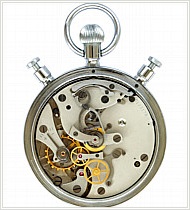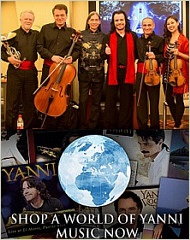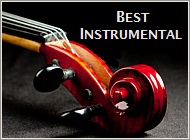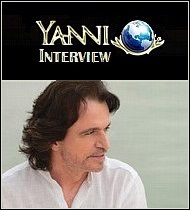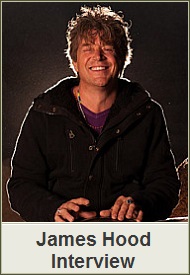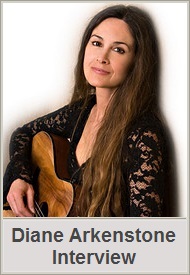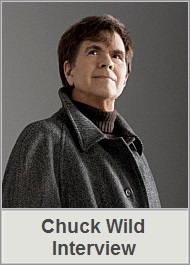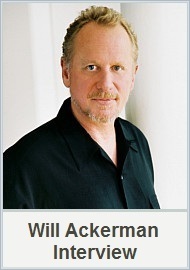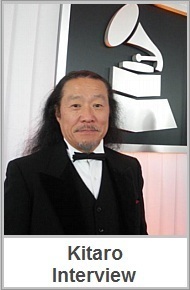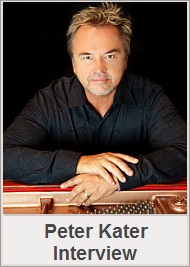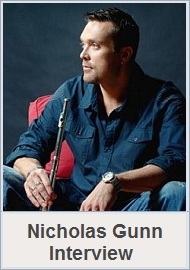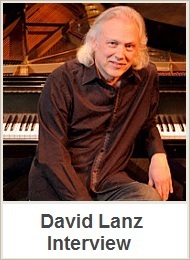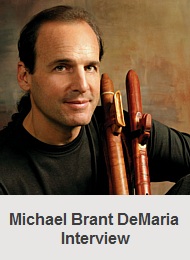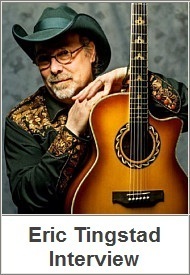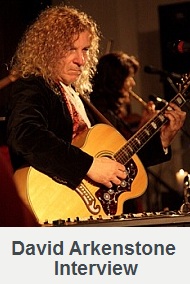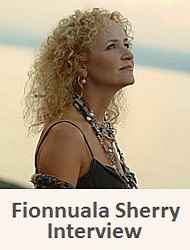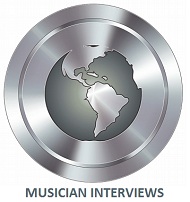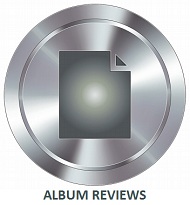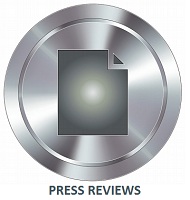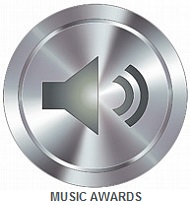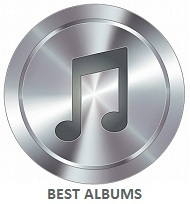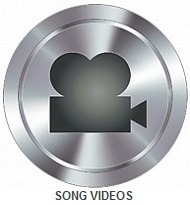Archive for the ‘New Age Music World’ Category
We will present an Interview with Michael Brant DeMaria PH.D. in the near future. John P. Olsen is preparing the in-depth questions to examine his expansive career as clinical psychologist, musician, public speaker, poet, and author.
In the Grammy Nomination Awards ceremony held on Thursday, December 2, 2009, Michael was among those honored by his nomination to the list of candidates for a prestigious Grammy Award, being the top award in the music industry.
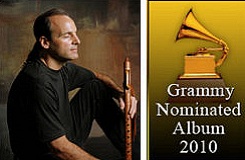 Siyotanka is the release that placed his name in contention for the Best Native American Music Album. Upon hearing this outstanding news about Michael just hours ago, B T Fasmer and I wish him the very best, when the final winner is decided and the award is presented to one of the five equally deserving nominees.
Siyotanka is the release that placed his name in contention for the Best Native American Music Album. Upon hearing this outstanding news about Michael just hours ago, B T Fasmer and I wish him the very best, when the final winner is decided and the award is presented to one of the five equally deserving nominees.
Prior to this news release about Michael’s Grammy Nomination, his Siyotanka album, which tells a story in song, decisively won a coveted Native American Music Award, ( NAMA ) in the Native Heart category, winning a prestigious ( NAMMY ) of the many well respected contenders.
In his psychotherapy practice, Michael created ONTOS to help people live more meaningful and effective lives. His music therapy expertise was acquired by personal and professional research in the fundamental principals of ambient sound techniques, acquired throughout his 25 year professional career.
His Healing Sound Series began with The River, and second in series Ocean, are prescribed with a relaxing ambient concept to assist with life issues, or as stress relief to hurricane survivors, for which the Ocean album is dedicated.
Learn more about Dr. Michael Brant DeMaria before the Interview is posted, by visiting ontos.org here and his music store ontosmusic.com here. The current review of his Ocean album titled Oceanic living can be found on our pages dedicated to Michael Brant DeMaria. Congratulations on your Grammy Nomination Michael!
I conducted an interview with John Adorney to reveal insight about a world class performing music therapist, whose beautiful relaxing compositions could easily be termed comfort music.
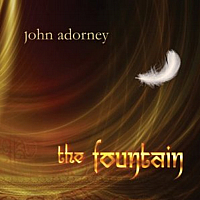 John Adorney began with the Beckoning album which became an instant hit with New Age fans, likewise acquiring many listeners who simply adore the Contemporary Instrumental genre in the process. The Other Shore, Waiting For The Moon, & Trees of Gold are his preceding albums that dispense the beloved classics we easily recognize from his relaxed musical signature.
John Adorney began with the Beckoning album which became an instant hit with New Age fans, likewise acquiring many listeners who simply adore the Contemporary Instrumental genre in the process. The Other Shore, Waiting For The Moon, & Trees of Gold are his preceding albums that dispense the beloved classics we easily recognize from his relaxed musical signature.
The Fountain is the newest release to showcase his reliable artistry in blending Electronic, Contemporary Instrumental and World music while quenching the thirst for a wide variety of music lovers who depend on beautiful song melodies for survival.
John Adorney wrote and produced the 11 songs for this album, along with instrumentation of piano, keyboard, acoustic guitar, cello, and percussion. Inclusive enrichment by female vocalist Daya Rawat, and African vocalist Marcel Adjibi, who wrote the lyrics, pleasantly enhance the project on a number of songs with their fluid harmonious voices.
The Fountain album takes an exploratory examination into music having an elemental influence from India and in the process, recreates the beloved John Adorney signature sound. This mosaic showing the ancient footprint of India is an aesthetic treasure openly embraced by Western listeners, along with his broad multicultural audience.
The steady stream of rich colorful songs everyone has come to expect starts with Safe Haven, securing his uplifting brand of Contemporary, Electronic, and Instrumental fanfare with an ideal beginning. The piano melody shines radiantly by administering a comforting theme in classic style while prescribing symphonic intermezzos along with lighter percussion and their clave counterparts.
Title song The Fountain is filled with the exotic touches of India, in an authentic sprinkle of spices that nicely compliments the mainstream Eastern entries. Daya softly chants an Indian passage in the song as ethnic instrumentals accompany her, along with more traditional piano and acoustic guitar rhythms.Comme Le Vent is immersed with opulent vocals by both Marcel and Daya, extending their reflections by a melody that seems to glow when placed alongside peaceful piano support to display all musicians as rich and radiant.
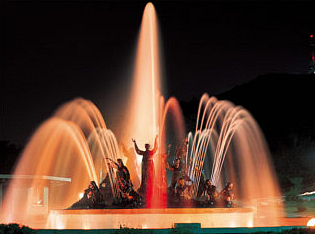 Feather on the Wind is a light picturesque blend of piano and symphonic instrumentals encircled by warm cello splashes of color. Abundant percussion rhythms in Echoes of Thunder enhance an illuminating mid tempo groove melody, while Even In Your Darkest Hour hallmarks Daya singing a soft eloquent song of peace, comfort, and hope. The lyrics are cradled by lighter percussion and an array of symphonic refrains to endorse her all is well message. An Ocean in the Drop has percussion rhythms counter piano notes tour up and down the keys.
Feather on the Wind is a light picturesque blend of piano and symphonic instrumentals encircled by warm cello splashes of color. Abundant percussion rhythms in Echoes of Thunder enhance an illuminating mid tempo groove melody, while Even In Your Darkest Hour hallmarks Daya singing a soft eloquent song of peace, comfort, and hope. The lyrics are cradled by lighter percussion and an array of symphonic refrains to endorse her all is well message. An Ocean in the Drop has percussion rhythms counter piano notes tour up and down the keys.
Silk and Stone will become a favorite by the unique mosaic of multicultural sound excursions that transport you to many continents around the globe. Your flight takes off with American hand clapping and bass drum rhythms before crossing the border into Latin countries percussion clave patterns. Smoothly landing with an intriguing European groove feel and enchanting accordion entries pleasantly remind of our restful stop at the outdoor cafe.
The music itinerary then moves into Middle Eastern style keyboard navigation before boarding acoustic guitar verses reminiscent of India. Circling the globe by Southern route, Brazilian tempo celebrates the festivities before a final touchdown into John Adorney’s home country of America, arriving well relaxed by one of his more adventurous music albums in the luxurious comfort we have come to expect.
Visit johnadorney.com here to sample The Fountain and Amazon.com to purchase here. Read our interview by clicking here.
Picture copyright BigStockPhoto.com – WizData.

John P. Olsen, New Age Music World publicist and contributing author for newagemusic.nu now serves as interview host with composing musician John Adorney. During their interview together many topics are covered including John Adorney’s biography, secret to success formula for producing outstanding music year after year, and his newest release entitled The Fountain.
John Adorney began with the Beckoning album which became an instant hit with New Age fans, likewise acquiring many listeners who simply adore the Contemporary Instrumental genre in the process. The Other Shore, Waiting For The Moon, & Trees of Gold are his preceding albums and beloved classics we easily recognize from his relaxed musical signature.
The Fountain is the newest release to showcase his reliable artistry in blending Electronic, Contemporary Instrumental and World music. The album features John Adorney on piano, keyboard, acoustic guitar, cello, and percussion. Vocalist Daya Rawat, and African vocalist Marcel Adjibi, who wrote the lyrics, pleasantly enhance the project on a number of songs with their fluid harmonious voices. It’s a beautiful album from a wonderful and consistent New Age artist.
Interview with John Adorney;
John P. Olsen : Thank you for taking time out of your schedule for us. We welcome you aboard John! It is an honor to meet you not only by your status in the music industry, but BT Fasmer and I happen to be among the many fans of your music!
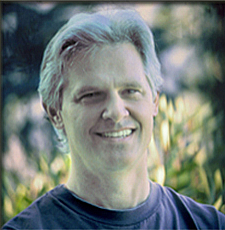 John Adorney : Thanks – it’s great to have this opportunity to speak with you!
John Adorney : Thanks – it’s great to have this opportunity to speak with you!
JP Olsen : Let me start by saying, you began by playing cello at age 9, were self taught on guitar, piano, and also began composing at an early age. Could you tell our readers about your earliest introductions to music and how you first began composing music at this young age?
John Adorney : Both my parents were artists, so initially, drawing was my first love. We had a few musical instruments around the house, and from a very young age, I always loved picking them up and playing with them, picking out tunes. There was always music around the house, and sometimes I would go to church with my mother and grandmother. When the hymns were sung, they were both always singing harmony – never the melody. I think this had a big effect on me – I’ve always loved harmonies as much as anything in music. When I was 11, the Beatles hit America, and I was totally smitten with pop music and taught myself guitar – which, to me, was quite easy compared to studying the cello. Once music clicked for me, I lost interest in doing art – drawing seemed dry to me compared to music.
My parents always supported whatever I was interested in, so they bought me an electric guitar, and later a 12-string acoustic guitar. We also had two reel-to-reel tape recorders in the house, so it occurred to me that I could record myself playing several instruments. I’d record a part on cello, then play the tape out loud, playing a second harmony part along, and recording both on the second tape deck. I’d do this back and forth until the sound quality of the initial recording was so bad, I really couldn’t take it any further. I’d make up my own pieces – I think the layering idea originated from playing in orchestra, where each part is separate, but when put together, creates something large, and often, quite sublime. I actually still have some of those old recordings.
JP Olsen : Some of your scholastic studies are centered around music. Could you describe your fields of study, vocational, and educational achievements?
 John Adorney : I studied cello into my college years, and I was a cello major at the University of Connecticut. I was also I interested in psychology, so when I finished my degree at Antioch University several years later, it was with a double major in music and psychology.
John Adorney : I studied cello into my college years, and I was a cello major at the University of Connecticut. I was also I interested in psychology, so when I finished my degree at Antioch University several years later, it was with a double major in music and psychology.
Then, while teaching music at a school for handicapped children, I discovered that there was a music therapy program at Cal State University, Long Beach. I completed my music therapy training there and became a board-certified music therapist. The semester after I graduated, I was asked to teach music therapy at the University.
JP Olsen : Working with handicapped children must be a very rewarding experience and I can only imagine what that must be like, John. What are some of the challenges and personal rewards felt from your experiences while teaching disabled children, and as a music therapist, how are you able to reach out to severely handicapped individuals?
John Adorney : First, I’d like to say that we’re all handicapped – it’s a spectrum, really, that we stand on at one spot and from there, we judge someone else. I’ve had doctors tell me that someone I was working with was severely retarded, but I knew that this was just because the person couldn’t speak. Of course if someone can’t speak, they’re going to test poorly on an “intelligence” test. It was easy to see by looking in the person’s eyes that they were perfectly intelligent. Common sense is very uncommon, as a very wise man once said.
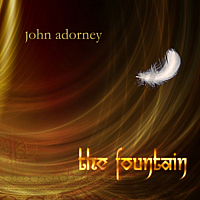 There are so many things that are great about using music as a therapeutic medium. For one, everyone loves music, so it has a universal appeal built into it. I think that this is perhaps especially true for handicapped people. I’ve always loved working with handicapped people, because they just seemed more open to music than most people – they’re not trying to be “cool.” And if there’s any kind of intellectual limitation, then music can transcend that.
There are so many things that are great about using music as a therapeutic medium. For one, everyone loves music, so it has a universal appeal built into it. I think that this is perhaps especially true for handicapped people. I’ve always loved working with handicapped people, because they just seemed more open to music than most people – they’re not trying to be “cool.” And if there’s any kind of intellectual limitation, then music can transcend that.
The actual application of music therapy varies, depending on what the goals are with each client. For example, an autistic person needs to connect to people – he or she lives in a fairly isolated world. My approach in this case would be to enter that person’s world with them – become a companion in their world. This might mean imitating the sounds that they make, and singing along with these sounds, finding out which songs and music the person likes, etc. Then, once I have been accepted as a friend in that person’s world, then he or she and I can venture slowly out from that world in a way that’s safe.
One client of mine has no speech, no movement, eats through a tube and breathes through a tube. She lies on her back all day looking at the ceiling. We have connected through my singing songs to her – I make them up about her, her environment, etc. The music can stimulate her or relax her, depending on what’s called for. She’s an amazing person, and it’s my honor to know her and be able to be with her. It’s all in the eyes and the smiles.
JP Olsen : I think the work you do with handicapped individuals is admirable John, and completely agree with your statement that there is enrichment and something to learn from all individuals, regardless of whether they are handicapped or not. In 1998 you joined the EverSound label and your first album Beckoning has received notoriety by becoming their most successful album to date. What awards and recognition have you received so far on all of your albums, and is Beckoning your most successful album to date?
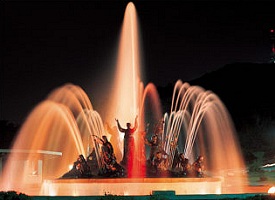 John Adorney : Well, it’s hard to say, whether there’s any difference between Beckoning and my other CDs other than the fact that Beckoning has been out the longest. This is probably why it has sold more than my other CDs. I saw on one radio airplay chart recently that my new CD, The Fountain, was #1, and Beckoning – which was released in 1998 – was #2.
John Adorney : Well, it’s hard to say, whether there’s any difference between Beckoning and my other CDs other than the fact that Beckoning has been out the longest. This is probably why it has sold more than my other CDs. I saw on one radio airplay chart recently that my new CD, The Fountain, was #1, and Beckoning – which was released in 1998 – was #2.
All my CDs have all been received really well. The Other Shore won the Best New Age Recording of 2002. Really, though, I don’t think that awards have anything to do with the value of music. Music really stands on its own. To me the greatest reward is when I get an email from a fan that says the music has had a profound effect on their life. I get some amazing emails, and I’ve already gotten several in response to the song “Even in Your Darkest Hour,” from The Fountain. Writing that song was unique, as it played in my head from beginning to end, exactly as you hear it on the CD. That happens maybe once in a lifetime for most musicians, I think. We forget sometimes how magical this thing called music really is.
JP Olsen : There are many projects with EverSound label artists you have performed with and likewise guest performers on your albums. What are some of the projects have you done with EverSound label artists?
There are two EverSound artists, Lino and Curtis Macdonald, who, after hearing my CDs, wanted me to produce theirs. It was a pleasure working with both of them and hopefully, I was able to add something. They are both extremely talented composers and musicians.
I also produced Diane Arkenstone’s “Best Of” CD, which was released on EverSound. I helped gather the tracks and I arranged the two new tracks on the CD. Diane’s a wonderful human being.
JP Olsen : Your discography consists of Beckoning, The Other Shore, Waiting for the Moon and Trees of Gold. Just released The Fountain does have the Adorney signature sound, yet a unique exploration of it’s own too, so can you offer some input about the ethnic paths taken on The Fountain, along with prior releases?
 John Adorney : I’ve always been a fan of world music and different ethnic grooves and so I’ve always wanted to incorporate them into my music. I’m also a big fan of Indian music – A.R. Rahman, and other so-called “Bollywood” composers. I think Indian music is the most sophisticated music on earth, and has such a rich and ancient history. The instrumentation is fantastic, the grooves are hypnotic, and also, the Indian music is not based on chord changes, as is western music – it’s based on a drone.
John Adorney : I’ve always been a fan of world music and different ethnic grooves and so I’ve always wanted to incorporate them into my music. I’m also a big fan of Indian music – A.R. Rahman, and other so-called “Bollywood” composers. I think Indian music is the most sophisticated music on earth, and has such a rich and ancient history. The instrumentation is fantastic, the grooves are hypnotic, and also, the Indian music is not based on chord changes, as is western music – it’s based on a drone.
I’ve always resisted using Indian sounds in my music because I respect the tradition of their music so much. But I feel there’s been a kind of new recognition of Indian musical elements fused into popular and dance music, which gave me the freedom to finally incorporate some of the Indian sounds. So I think The Fountain incorporates some of these elements more than my previous CDs.
JP Olsen : Do you have a secret to success formula for providing everyone with music having an enduring positive influence over the years, and what inspires you to create and then transfer your thoughts into your compositions?
John Adorney : I don’t know if I can say I have a secret – where music comes from is the real secret. Sometimes as musicians we get too much credit and recognition for simply being a channel for the music that comes into this world.
I always write from a feeling – never about some external thing. I love the un-defined quality in music, which is why I write mostly instrumental music. Even the lyrics in the songs I’ve done are usually open to interpretation, and I never like to say what my own interpretation is, because I don’t want to limit what someone else might experience. To me, what the musician is expressing is not what’s important – it’s what the listener feels when they hear the music.
 I’ve also benefited in my life by being a student of a great teacher named Prem Rawat. He has really cleared away a lot of the garbage in me that would have prevented this music from coming through. If people are interested, they can go to http://www.wopg.org/. That stands for Words Of Peace Global.
I’ve also benefited in my life by being a student of a great teacher named Prem Rawat. He has really cleared away a lot of the garbage in me that would have prevented this music from coming through. If people are interested, they can go to http://www.wopg.org/. That stands for Words Of Peace Global.
JP Olsen : In relation to the technical aspects of your projects, can you tell a little about how your music is produced?
John Adorney : When I first started with Beckoning, and with my second CD, The Other Shore, I was lucky to get Paul Dieter to do the mixing – he was on a break from doing work with Jackson Browne and Crosby, Stills and Nash. He had gotten a Grammy nomination for mixing Jackson’s This Time CD. I don’t even remember exactly how he heard about me, or the other EverSound artists. But I loved working with Paul, and I’d always pick his brain as he worked – I was trying to learn as much as I could about the process. Also, some of my music was mixed by a fantastic engineer, Leslie Chew, who also has taught me a lot about the mixing process. Eventually, I’d felt I’d learned enough to mix my own music, which I started to do with Waiting for the Moon.
My home studio is very small, but with a keyboard and a powerful computer, you can really create some great sounds. I do a lot of tracking in the Midi realm, and then sometimes replay many of the instruments live, to give the music a more “live” feel. I’ve always loved blending electronic and acoustic sounds. Believe me, as a composer I feel very fortunate to be able to play the keyboards, cello and guitar – these really cover a lot of ground, and it helps keep the budget down! Besides – I can play the music exactly as I want it to sound.
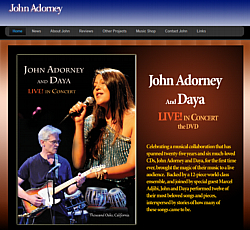 I’ve worked in Cubase and ProTools, but now I work in Logic Studio, and do some audio editing in ProTools. Logic is very musical, but I still find ProToolsto be the simplest program in terms of editing audio. Sometimes if I need to record something live, like Daya’s voice, I’ll bring my equipment to a professional studio in Westlakeand will record the live elements there. Really, all that’s needed is a quiet place and a good microphone.
I’ve worked in Cubase and ProTools, but now I work in Logic Studio, and do some audio editing in ProTools. Logic is very musical, but I still find ProToolsto be the simplest program in terms of editing audio. Sometimes if I need to record something live, like Daya’s voice, I’ll bring my equipment to a professional studio in Westlakeand will record the live elements there. Really, all that’s needed is a quiet place and a good microphone.
JP Olsen : Daya is featured on many of your albums, lending her vocal talents that can only be described as exquisite. Her vocals compliment your music so well and is just a natural combination, so how did Daya’s singing career with you begin?
John Adorney : I was Daya’s music teacher from when she was 7 years old, until she was about fifteen. She’s always had an incredible voice, and a beautiful heart that comes through in her singing, even from a young age. We have a wonderful relationship, and she’s always happy to sing on my projects. I feel really fortunate to not only know her, but to have her sing on my music.
JP Olsen : EverSound and major retail outlets sell your music at present, but I’ve read that CD albums and individual songs will become available on your website. When is your website retail store expected to open?
John Adorney : I’m still working out the kinks on the website store. I want to make sure that it’s a really smooth experience for anyone who goes there to purchase. I know how frustrating poorly-organized websites can be. It should be up and running in the next few weeks. It’ll be fun, because then I can have individual tracks available for download that were never on a solo CD.
JP Olsen : On behalf of our readers, BT Fasmer, and myself, Thank You again for taking time out for us and giving everyone the opportunity to learn more about you on a personal level and the outstanding music you produce that keeps everyone coming back for more. We consistently play your songs on our 365 Home of the Stars Radio and invite our readers to tune in and discover the music of John Adorney.
John Adorney : Thank you – it’s been wonderful having this opportunity to talk about the music with people who are truly interested. Thanks again.
Visit johnadorney.com homepage to sample or purchase, or visit his Amazon.com page. Read our page for John Adorney. Cello picture copyright Bigstockphoto – Stab / David Martyn & johnadorney.com.
Some of the artists I write about find inspiration by discovering the scenic wonders here on Earth. Natural compositions with peaceful and majestic music themes from an individual and local perspective can indeed be very inspirational.
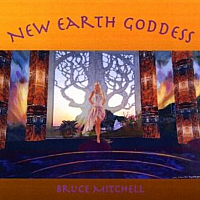 Ontario Canada is the geographical location of a New Age artist who brings a beautiful listening experience to a worldwide audience. Showing a fine music observation of the abundant natural beauty that surrounds everyone each day, here is a nice album where time was given and attention was paid while orchestrating their scenic recollections.
Ontario Canada is the geographical location of a New Age artist who brings a beautiful listening experience to a worldwide audience. Showing a fine music observation of the abundant natural beauty that surrounds everyone each day, here is a nice album where time was given and attention was paid while orchestrating their scenic recollections.
Bruce Mitchell is a composing musician blessed with a natural talent for bringing out the best of what mother Earth has to offer with the just released New Earth Goddess album on the Millennium Label. His music compositions have a great distinction of being the feature TV soundtracks for Nature Watch & The Global Family in Japan’s multiple language International Public Broadcast program (NHK) becoming a prime time success in Europe, among other countries.
Bruce Mitchell first began with earlier albums Hidden Pathways, Dancing on the Edge, and The Gathering, relying on rich orchestra movements to translate his natural music abilities. Celtic Destiny & Celtic Sanctity are also consistent with his prior work and shown with just a touch of Celtic influence and now leads to his current release.
New Earth Goddess is an album with 10 song exploration into the hearts and minds of ten charitable goddesses who provide a (song subtitle) depicting the gift endowment held within each individual song. Bruce once again engages his friend and world class flutist Ron Korb, who likewise solidifies the project playing concert flute, bass flute, and 2 exotic bamboo woodwinds Dizi & Bansuri, with both instruments having ancient origins.
New Earth Goddess by composer Bruce Mitchell and co-musician Ron Korb represent skillful craftsmanship in composition and piano skills of one, along with equally strong woodwind skills of another. Their performance gives a dramatic looking through the lens glimpse into the naturalistic side of music by powerful symphonic expression, choir entries, and harmony rich vocals.
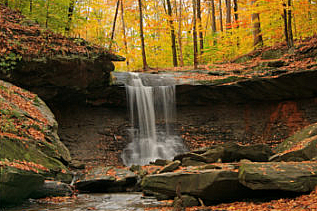 Flowing song Athena grants (inner wisdom) by the brass horns that open eyes, ears, and minds to a mid tempo classic presentation of piano and flute melody backed by an orchestra landscape full of strings and winds that exhibit nature as pure scenic ambiance.
Flowing song Athena grants (inner wisdom) by the brass horns that open eyes, ears, and minds to a mid tempo classic presentation of piano and flute melody backed by an orchestra landscape full of strings and winds that exhibit nature as pure scenic ambiance.
The display of lighter airy moments at times nicely build into full thunderous entries, symbolic that smaller streams do trickle into larger rivers, which then flow with increasing momentum until reaching the greater oceans.
Persephone vocalizes a moderate pace in (transformation) where changing North to South seasonal winds are recalled by moving harmonic vocals. Gentle peaceful winds are heard by flute and piano duo whispering in timely unison with the lighter vocals. Brigit implies a more noble statement in (stand for your beliefs) with deeper percussion and melodic piano passages alongside bagpipes, oboe, and woodwinds, while Aeracura opens with a much quieter beginning to (unfold & blossom) considering the melody soon orchestrates in a dramatic ascension, opening right along in time with fragrant vocals.
Damara suggests a gentler mindset for (guiding children) by lighter tone in flute melody set behind piano chords and soft xylophone runs, implying a gentler hand is always wisest when caring for the younger ones. Maeve (cycles and rhythms) in an epic way when piano and flute take on a dramatic performance with one another, creating a natural ebb and flow between the two musicians, leading to the conclusion that Bruce Mitchell and Ron Korb have succeeded by becoming a constant and enduring source of inspiration while performing their music orchestration, much like the Earth itself.
Visit newearthgoddess.net homepage to sample/purchase, or at Bruce Mitchell’s Amazon.com page or CDBaby.com page.
Picture copyright Bigstockphoto.com – PosterPuppy.
There are thousands of ways the word love can be defined. When talking about love in an interpersonal context, everyone recognizes their true feelings and know they love someone without a written description to define what they are feeling.
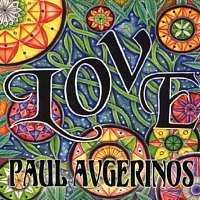 Paul Avgerinos is the composing musician behind the album having a title and theme related to the divine word we call love. This New Age artist who named his positively feel good album after one of our most primitive and basic needs we possess received Zone Music Reporter awards for Best World Album in 2007 with Garden Of Delight, and Zone Music Reporter’s Best Relaxation/Meditation Album award in 2006 with Gnosis. Many of his songs also enjoy abundant online radio airplay, so he shares his relaxing music at the top on many online radio charts.
Paul Avgerinos is the composing musician behind the album having a title and theme related to the divine word we call love. This New Age artist who named his positively feel good album after one of our most primitive and basic needs we possess received Zone Music Reporter awards for Best World Album in 2007 with Garden Of Delight, and Zone Music Reporter’s Best Relaxation/Meditation Album award in 2006 with Gnosis. Many of his songs also enjoy abundant online radio airplay, so he shares his relaxing music at the top on many online radio charts.
Paul Avgerinos’s latest album titled Love does focus on both the nature and nurturing side of music, giving a caring gentle touch to ambience while providing a close to the heart definition of what the word love means to him on a personal level, both in music and by his own compassionate words like shown below.
Round Sky Music label is at the heart of Paul’s discography, where Ambient, Healing, and Relaxation music is expressed in an ever present restful state of mind and where anyone who searches for it can find Love. With his latest like prior albums, Paul performs in his natural musical state of contentment playing cello, bass, violin, 12 string acoustic, electric swell & echo slide guitars, vocal choirs, synthesizers & sound design. Paul does recognize inside the CD album cover that the Love album would not be a reality without the dedication of his friend and co-musician Kevin Braheny Fortune.
This album is dedicated to my dear Mother and Father resting in peace. They showed me by their selflessness and devotion, what true love really is. It is my fervent desire that all beings will feel, receive and give unconditional blissful love in all it’s forms with increasing ease and comfort. Paul Avgerinos
Kevin’s Braheny Fortune’s role was to first lay the groundwork for many of the songs, while providing key instrumentation throughout, giving the entire project equal balance between the two artists while they each gave their personal interpretation about the gift of love musically. Kevin plays clarinet, electronic wind, alto flute, and soprano saxophone, sharing his own give and take for this relaxing project titled after the easy to understand, yet difficult to define word.
Dictionaries provide a simple explanation of the complex feelings involved when we love someone, so here is a quick check of the basic concept; Love ( Luv ) Noun. Term of endearment for the intense emotional attachment towards another person, based on a principal sense of commitment, loyalty, and devotion, valued on their personal qualities, sharing oneness that is without exception.
 Love is without exception a comfortable feel good album, fulfilling by an abundance of deep and colorful Ambient sound escapes that completely encircle you with relaxing tonal qualities. This trademark music with a calming effect will never leave you all alone at a shallow plane in notes or isolated at some distant horizon in sound, so expect plenty of sentiment along the way.
Love is without exception a comfortable feel good album, fulfilling by an abundance of deep and colorful Ambient sound escapes that completely encircle you with relaxing tonal qualities. This trademark music with a calming effect will never leave you all alone at a shallow plane in notes or isolated at some distant horizon in sound, so expect plenty of sentiment along the way.
I found the harmonic instrumental notes appear as abstract layers of color that drift and surround you, only wavering at the next soft touch of brass, string, or woodwind instrumentation. The lighter notes rise above at times to reach a plateau then gently settle into a middle range melody, providing equal balance with a distinctive atmosphere that secures the album’s ambient concept.
While the Love album may not strike at the very core of our existence as the title might suggest, it does succeed at offering an inner peace through gentle calming ambiance anyone can become attached to. You will also find yourself inspired by Paul’s sincere commitment for sharing his musical expression on this album while giving and receiving love in an unconditional manner, just like the word love was meant to be.
Visit roundskymusic.com here and sample his album on CDBaby.com here.
Picture copyright Big Stock Photo – MargoJH.

John P. Olsen has just conducted an Interview with Mars Lasar. The topics are about Mars Lasar’s remarkable music career, current projects, and innovative technological products. There is some informal conversation about New Age music in general, and what it feels like to be a famous musician with a history of producing impressive albums during his career.
Mars Lasar is a music celebrity known for bringing a total music experience not only to his broad multi genre fan base, but to persons not even familiar with the name Mars Lasar, since he has prepared music scores on many television and film credits over the last 25 years, along with the lengthy discography produced during his music career. During his career he has provided music scores for highly recognized global corporations, and remains a constant producer in the television and film industry, in addition to his traditional album work.
You will find Mars Lasar specializes in a vast range of genre influences with his wide ranging discography, and his nature inspired releases seem to capture the inherent pride and true spirit of the American way of life. His insightful dedication to protection of the heartland that becomes a constant reminder of this gifted artist and conservation legacy that will remain relevant and time honored for future generations.
Mars Lasar is also a professional photographer. The amazing images he has captured have been on display in galleries near and far. When you compare his musical creations to his photographic images, the fine line of distinction between the two creative endeavors are more attune to making a single artistic statement. John Olsen recently interviewed Mars Lasar, and today we are pleased to provide his fans and our visitors their conversation.
Interview with Mars Lasar;
John P. Olsen: Your lifelong career as a musician has already been marked with many outstanding achievements over the years Mars. There are also many moments of media exposure on television and film. Could you tell us some of the programs your music has been aired on past and present?
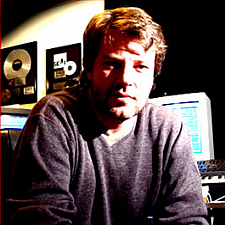 Mars Lasar: I have had my work played on many well known shows like: 24, Medium, American Idol, America’s Most Wanted, Oprah Winfrey, these are just to name a few. I have been providing music for film and television for over 25 years.
Mars Lasar: I have had my work played on many well known shows like: 24, Medium, American Idol, America’s Most Wanted, Oprah Winfrey, these are just to name a few. I have been providing music for film and television for over 25 years.
John: What are some of the greatest moments in your career on a professional level, and could you tell us about the events that were occurring during the single greatest moment to date in your career as a professional musician?
Mars: I must say I’ve had some rather unusual adventures. Being a composer/artist and sound designer with a very large sound library, I was asked to compose all kinds of things from making an orchestra with wildlife sounds to creating hit song productions for the artist Seal. I sat in Abbey Road Studios and spoke music and technology with Alan Parsons, had a cup of tea with Kate Bush, worked with Herbie Hancock and his production team on cutting edge music, wrote video-game music for Sega and Sony Play Station with Keith Emerson from Emerson, Lake and Palmer.
I appeared on the Queen Mary and joined astronaut Buzz Aldrin on topics of energy conservation for Earth Day International, I played synthesizers on street corners dressed in a space suit, assembled an audio rainforest in a dome-shaped butterfly sanctuary in the city, opened for Mike Oldfield on his Tubular Bells tour, traveled to Latvia to represent Russia in the Eurovision contest for which I wrote only the music, the lyrics were in Russian (artist Tatu), I took a shotgun microphone and recorder into the Australian outback and recorded frogs and used them for percussion instruments in my albums, I sampled orchestras that walked out after they found out we were sampling them (in the 80’s), I recorded choirs in France who hid the one that was out of tune. So you see, music and technology led me to many interesting adventures.
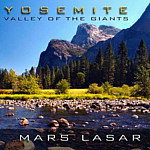 John: Recently when I had an interview with another artist, I asked if making her first individual CD/DVD release of Save The World was easier than she thought it would be. I wanted to ask if having the tables turned by helping the artist with her release was what you were expecting, and were there any memorable moments during the album production?
John: Recently when I had an interview with another artist, I asked if making her first individual CD/DVD release of Save The World was easier than she thought it would be. I wanted to ask if having the tables turned by helping the artist with her release was what you were expecting, and were there any memorable moments during the album production?
Mars: Save The World was probably the most work I’ve ever done with multiple vocals. It was like making a king size quilt with silk and a needle. The stitching involved was never ending and required almost surgical accuracy.
I’ve always been fascinated with the technique of multiple layered vocals, even back when we were using analog tape in the late 80’s. During my years of music production I used this technique wherever possible, but with she being a choir singer and theory whiz, I was really able to push her to the limit.
It was an exhausting 1 year production but well worth the end result. Sometimes the production focus became so intense we just had to break out in laughter during vocal takes, and sometimes in tears. She is a multi-talented artist that often makes appearances on my new releases. I’m sure you’ll be hearing more from her in the near future.
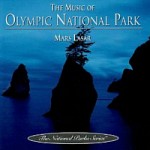 John: You have produced 2 nature inspired projects related to America’s National Parks. Olympic National Park was your first album, and Yosemite: Valley of the Giants your second. I heard through the grapevine you have just completed another nature inspired project. Is this right Mars, and could you provide some details about your latest National Park project ?
John: You have produced 2 nature inspired projects related to America’s National Parks. Olympic National Park was your first album, and Yosemite: Valley of the Giants your second. I heard through the grapevine you have just completed another nature inspired project. Is this right Mars, and could you provide some details about your latest National Park project ?
Mars: Yes, I finished another nature CD dedicated to the Four Corners. This one has plenty of Native American Indian influences. It depicts the vastness of the desert and surrounding canyons, with titles like: Hovenweep, Dead Horse Point, Canyon Lands and White Buffalo Woman. The CD is called Grand Circle and should be coming out late 2009.
John: In working alongside other respected musicians like yourself, including Hans Zimmer in the Days of Thunder Soundtrack, the musician Seal on the album titled Seal, and Herbie Hancock on the Dis Is Da Drum album among the many others. What is it like to work with other great artists like yourself, and were there any memorable moments you would like to share with us?
Mars: There is a deep respect when collaborating with artists and producers that are just as into the skill-set as you are. When collaborating in this manner, you’re looking for a perfect talent match for the customization of the end task, or the “brief”. Sometimes the music comes easy, and other times not so. Every artist I have worked with have their own unique eccentricities, and they change according to what is going on in their lives at that time musically and personally. It’s a detailed puzzle. Even the simplest songs can take forever to accomplish.
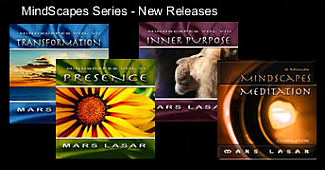 John: From 1998 to 2001 you released the following albums: Sapphire Dreams, 11.02, When Worlds Collide, Karma, and Star Is Born, among others In addition you have produced a number of series projects like the Mind Scape series and Baby Escapes. Was 1998 to 2001 the busiest period in your career, or was there another point in time where producing music was in the forefront? Is there a reason you were so creative during the time period?
John: From 1998 to 2001 you released the following albums: Sapphire Dreams, 11.02, When Worlds Collide, Karma, and Star Is Born, among others In addition you have produced a number of series projects like the Mind Scape series and Baby Escapes. Was 1998 to 2001 the busiest period in your career, or was there another point in time where producing music was in the forefront? Is there a reason you were so creative during the time period?
Mars: From the time I discovered music at 11 to now, I’ve been busy making my own versions of what I call “emotional mathematics”, evoking an emotion from music particularly with the latest technology was my thing. There has never been a dull moment. I just follow my art where it takes me.
The key was How do to make money from my art, so I can continue doing it? Being a composer means you must diversify your talents to survive, and that information varies on so many things that can happen in the industry at the time, which can actually take you off-course for years. I found that once I had the talent, distribution, audience and experience to release multiple works, there was no stopping me.
John: The Eleventh Hour was a successful album. Could you tell the events surrounding The Eleventh Hour time period?
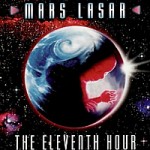 Mars: The only way to explain The Eleventh Hour success was the timing in the environment at the time. Many people were talking about cell-phones frying their brains, they were big and cumbersome in the early 90’s. My song from the cd Cellular City with all its phone noises and technology driven Jazz seemed to hit that chord. Next thing you know it’s playing on heavy rotation on American radio. I went all out on that CD to show my true talents as a composer and sound designer.
Mars: The only way to explain The Eleventh Hour success was the timing in the environment at the time. Many people were talking about cell-phones frying their brains, they were big and cumbersome in the early 90’s. My song from the cd Cellular City with all its phone noises and technology driven Jazz seemed to hit that chord. Next thing you know it’s playing on heavy rotation on American radio. I went all out on that CD to show my true talents as a composer and sound designer.
John: I recently wrote a album review of your At The End Of The Day album, and I found it a nice fusion of Jazz and New Age, noting the fact that many of your albums are a fusion of genres. Do you think this is why your music is so popular, and do you purposely blend genres, or does this just happen naturally for you when creating an album?
Mars: My curiosity for music and art never ceases. It’s the never-ending exploration. For me it’s all about expressing yourself in as many ways as possible and sharing your discoveries with the world. I never wanted to be pigeonholed into the one genre, I just have way too much to express. Because of this my fan base is very broad. From mediation to industrial electronic to jazz. This is also why I like writing for film and TV.
John: Earlier in life you worked 8 years for Fairlight Instruments developing innovative multi-track synthesizer sequencers. Could you tell us about the products you developed and the events you were involved with during your early years?
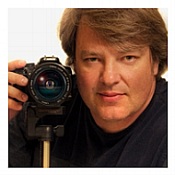 Mars: Back in the early 1980’s I was heavily into “concrete music”. This was very abstract and non-eventful music, but the techniques were interesting to me. I would put a blank cassette tape into my shortwave radio tuner, press record and pause, look for a neat sound on shortwave (lots of squelching to choose from), hold a stopwatch and together I would release pause and start the stopwatch for one second then press the pause again. Then I would look for the next shortwave sound and repeat. In doing this you could make crude but interesting rhythmic patterns and tones. Essentially I was sampling audio and playing it back. At 18 with my knowledge of sampling and classical training on the piano I fell into the lap of Fairlight Computers. The first music computer based production tool in the music business.
Mars: Back in the early 1980’s I was heavily into “concrete music”. This was very abstract and non-eventful music, but the techniques were interesting to me. I would put a blank cassette tape into my shortwave radio tuner, press record and pause, look for a neat sound on shortwave (lots of squelching to choose from), hold a stopwatch and together I would release pause and start the stopwatch for one second then press the pause again. Then I would look for the next shortwave sound and repeat. In doing this you could make crude but interesting rhythmic patterns and tones. Essentially I was sampling audio and playing it back. At 18 with my knowledge of sampling and classical training on the piano I fell into the lap of Fairlight Computers. The first music computer based production tool in the music business.
I worked day and night with the R&D team, explaining the intricacies of music and making the first music sequencer “Page R”, it was the shortwave concept but to the next level. I helped to built the massive sound library that came with the machine, packaged in a cardboard-box the size of a large refrigerator. I quickly became very knowledgeable on the computer and traveled the world demonstrating the Fairlight at trade shows, and personal demonstrations to: Duran Duran, The Divinals, Captain and Tennille, Mike Oldfield, Herbie Hancock, Hans Zimmer, Alan Parsons, BBC, Kate Bush and plenty more.
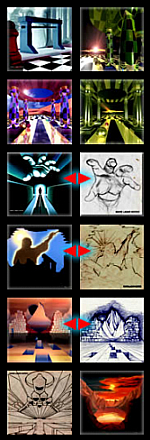 My compositions came with the computer and at a price of $70,000. After helping to get the Fairlight off the ground, I started working freelance. Today the machine is obsolete, PC music software is at a fraction of the price and 100x more powerful, some examples are: Logic, Performer, Cubase and Cakewalk.
My compositions came with the computer and at a price of $70,000. After helping to get the Fairlight off the ground, I started working freelance. Today the machine is obsolete, PC music software is at a fraction of the price and 100x more powerful, some examples are: Logic, Performer, Cubase and Cakewalk.
John: In your art & photography pages at MarsLasar.com I saw some pretty unique paintings along with your CD album collectables and prints available for purchase. I also read some of your oil paintings are created in more of a process than by just using art brushes. Could you tell us a little about how your original works of art are created?
Mars: I grew up with art. My mother is an exceptional fine artist, she taught me how to paint oil on canvas, I was immediately hooked and spent every moment I had figuring out the behavior of oil paint on canvas. At the age of 14 was asked to hang my works in my high school and I just kept going from there. After painting my canvas I would take a high resolution photo and manipulate the image even further in Photoshop. Photography became a natural progression as soon as it became digital, I wasn’t too keen on the darkroom and chemicals in the early days. Now, I take my camera gear everywhere, and most who know me know that I’m off taking photos when I should elsewhere I enjoy making art from music to art design to the business, it’s all the same to me. The most important thing is that I translate my concept across to the audience so you can enjoy the experience.
John: Your earliest music studies as a young adult were the classical works of Beethoven, Chopin, and Bach. Do you believe this classical foundation at a young age carried through into your earlier compositions and even into present day compositions?
Mars: Absolutely. The emotional mathematics behind classical music is deep and well thought out. I connect with my classical roots in most of my work. I think it’s an essential tool for young composers. When it comes to classical music, you can never know enough.
John: The family oriented Baby Escapes series 1 – 8 is intended for relaxation. Was there a personal reason that led you to create the more family oriented recordings, and what specific goal did you have in mind with this series?
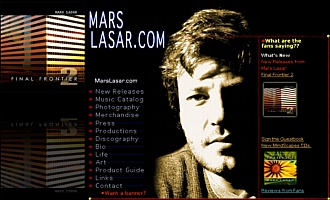 Mars: BabyEscapes was a sonic experiment made to keep my baby daughter asleep. Made in the 1980’s there wasn’t much around in sleep therapy, so I made my own. It worked so well we had to wake her up during naps. The idea was to create a repetitive cyclical loop that essentially massages your mind to sleep. The secret to this is the choice harmonic resonating tones. There is so much to learn about the strength of music and vibration.
Mars: BabyEscapes was a sonic experiment made to keep my baby daughter asleep. Made in the 1980’s there wasn’t much around in sleep therapy, so I made my own. It worked so well we had to wake her up during naps. The idea was to create a repetitive cyclical loop that essentially massages your mind to sleep. The secret to this is the choice harmonic resonating tones. There is so much to learn about the strength of music and vibration.
John: Clearly you have many professional interests like music, art, and new technology. It makes me wonder if you have any just for fun hobbies and what you enjoy doing in your spare time?
Mars: My hobbies start as hobbies then turn into businesses. There is only so much I can do in a day, so I just have as much fun as possible while I’m here for this short stay on earth.
John: I would like to close by saying Mars, that you are perhaps the most talented individual I have ever been introduced to in recent memory! Our readers, and myself do thank you for taking time out to give everyone some insight into both your professional career and personal life.
Mars: Thank you. I have worked hard to deliver our creative expressions to the world. I hope that through our art I can make a difference, and inspire others to do the same.
Visit MarsLasar.com and sample albums at his music store or Amazon.com page. You can visit Mars Lasar’s art pages & photography pages and my page for Mars Lasar. Art and photos are courtesy marslasar.com.
Most people begin their day with the hopes of making the most of each new opportunity improving their lives in some aspect. One solo pianist has made it a priority to better his music abilities through hard work, education, and practice. This dedication to betterment has empowered him to acquire musical abilities heard at a more professional level.
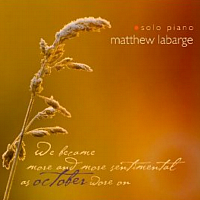 Matthew Labarge from Blacksburg Virginia is the composing solo pianist who first started his job career as an engineer, then began to study piano composition full time with composer John Hilliard, shortly releasing his first two albums, First Fall Night & In Small Hours.
Matthew Labarge from Blacksburg Virginia is the composing solo pianist who first started his job career as an engineer, then began to study piano composition full time with composer John Hilliard, shortly releasing his first two albums, First Fall Night & In Small Hours.
Even though both projects are something to be proud of Matthew Labarge felt composing was his stronger point and actively began to rebuild and improve his technique of piano playing from the ground up, greatly restructuring his performance foundation before releasing his current album October.
Believing this latest solo piano project is his best to date, I do agree with him after listening to all 3 albums, and I do notice the improvement in his performance abilities, but wouldn’t completely disregard his prior albums.
I really liked the songs Prelude & Dance from the First Fall Night. Both albums gave me a better understanding about the changes in composition on the October project.
October is Matthew’s latest release, and the first he had total control over, having wrote, played, engineered, and produced the entire project. This latest highlights his re-dedication to self improvement on the piano, and it shows in both the composition and performance aspects in my opinion.
Music has been so very important to me. During my worst hours, it has been a singular candle in the darkness. I truly can’t imagine life without the music that I love.
What music has done for me, I want badly to pass on. My deepest hope is that this music inspires you and makes your life a little better, if even for some fleeting moment. Matthew Labarge
This album is polished and sincere, greatly dignified by the abundant classical touches that portray Contemporary Piano in a refined manner by his classic articulation, elevating both the expression and imagination to the overall project, without over emphasizing the classical theme. John P. Olsen
 The song Wedding Waltz has special meaning to Matthew since it was written during the time period when he proposed marriage to his girlfriend. Knowing this is already a bit revealing to the rest of us.
The song Wedding Waltz has special meaning to Matthew since it was written during the time period when he proposed marriage to his girlfriend. Knowing this is already a bit revealing to the rest of us.
This first piece begins in a mid tempo moment of quiet anticipation that gently responds with an invitingly deep tonal perspective, parlayed in a classical straight forward sense, yet in a provocative way too by the inclusion of major to minor key changes.
The rich piano melody is timed equally like a sentence where cords join in unison, adding the context of emotion as if waiting for her answer to the big question, which leaves everyone else wondering what was the outcome of his marriage proposal.
Her reply to Matthew’s marriage proposal was YES!
The song Leaves Dancing marks the officiating period when our happy couple exchanged wedding vows, placed rings on one another’s fingers, and then became husband and wife. This celebration piece appropriately leaps with excitement starting with an upper register play on notes that are well suited, befitting the theme of colorful leaves falling on an October day while also observing this couple’s commitment pledge to one another.
Then an interchange in piano octaves are given during the melody, marking this song and occasion by the leaps and bounds of notes from upper register octaves that step to lower register notes, then revisit again while qualifying this moving song and this wedding occasion as a beautiful celebration of their holy union of marriage together.
We would like to congratulate Mr. & Mrs. Matthew Labarge on their recent wedding. We wish you both the very best and much happiness in your life together.
Visit the just married Solo Pianist matthewlabarge.com here. Picture Copyright Big Stock Photo – Yarchyk.
Imagine yourself as captain of a sailboat near the Hawaiian Islands exploring nature in the great outdoors, taking photographs, listening to music, and then sketching out the notes for your next piano solo album.
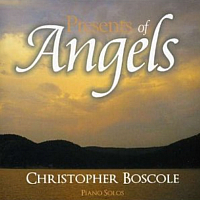 Christopher Boscole is a composing pianist who enjoys those activities while sail boating near his home in Hawaii, a state prized for its natural beauty.
Christopher Boscole is a composing pianist who enjoys those activities while sail boating near his home in Hawaii, a state prized for its natural beauty.
I am sure composing piano music rates among the highest on his list of activities since he currently has 6 albums available. September Songs & Land Of Music are Contemporary Instrumental, while Shimmer, O Christmas Tree, & Presents Of Angels are Solo Piano. I also found his Jazz influenced album Natural Instincts a pretty good performance while combining his talents on piano with other like minded artist in the Instrumental Jazz category.
Christopher is a classically trained pianist having a Bachelor of Arts in music and professional music educator performing for over 20 years now. He also earned a Master of Music in Studio Music and Jazz, and holds a Master in Teaching degree, so it won’t come as any surprise that you will find these qualities apparent in both his composing skills and music abilities in every one of his solo piano releases.
Presents Of Angels is his current release, doing well after receiving nomination in 2009 at the online Whisperings Radio. This latest original composition for Solo Piano is in the New Age, Lyrical Folk Piano style of Contemporary Piano.
You won’t hear any dry music Seascapes, since his studious background apparently provides an effortless grace that rises like a tidal swell, then sails along comfortably with many points of interest during his adventures on the grand piano. The solo performances are gently delivered with vigor and grace, capturing the full range of motion on the piano keyboard, as if he were capturing the full wind in his sails.
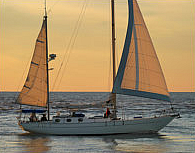 The 14 solo piano songs on Presents Of Angels represent a wide range in tempo and style in a classic setting, bestowing a restful state of repose and contemplation, while also granting plenty of exciting moments full of adventure.
The 14 solo piano songs on Presents Of Angels represent a wide range in tempo and style in a classic setting, bestowing a restful state of repose and contemplation, while also granting plenty of exciting moments full of adventure.
The song Sailing To You is a good choice since there were many classical thoughts and key changes that held my interest, which pretty much describes the complete solo compositions on this latest album.
Just as a person would stand and pull the rope rigging hand over hand on a sailboat, Christopher resides at his piano in a like manner, except this hand over hand crossing motion is a gentle touch of the piano keys, giving a sound impression of ocean waves softly lapping against the hull of a boat.
Christopher Boscole’s new solo piano album for this fall titled Inner Voyages will undoubtedly reflect his sailing adventures in Hawaii too. I can just picture Christopher composing music for this next album after first charting a direction, hoisting the sails, and then setting the boat rigging for his next adventure. Knowing Christopher Boscole’s best piano compositions are set to a gentle ocean breeze, everyone can expect another smooth sailing performance.
Visit ChristopherBoscole.com to sample and purchase or find at CDBaby.com. Big Stock Photo – mandj98.
One man’s personal dream of a world symphony has become a reality by the release of his second album through the AMAdea Records label based in Bulgaria. There are around 6.7 Billion people living on our planet according to the latest U.S. Census Bureau estimate.
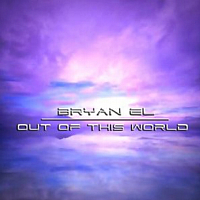 Bryan El is the New Age artist with a current release entitled Out Of This World. Taking into account the out of this world number of people on the planet, Bryan has now begun counting a large number of people to his quickly multiplying fan base.
Bryan El is the New Age artist with a current release entitled Out Of This World. Taking into account the out of this world number of people on the planet, Bryan has now begun counting a large number of people to his quickly multiplying fan base.
After listening to his Out Of This World album for the first time, Bryan can count me in as a member, adding to his total tally of electronic symphony fans. I have always loved electronic music like Tangerine Dream so his release re-enforced the sound of distinction great synthesizer music produces. Those who like to indulge in the atmosphere of premium electronic projects that challenge the vast boundaries of synthesized music with classical music influences, can also be added to the register if you sample some of his carefully arranged numbers.
Bryan El began composing symphonic music with a master plan of sharing his New Age Electronic projects with the masses in a calculating manner. Speaking a universal language by translating his thoughts and feelings in total music harmony, Bryan El has a great start with his beautiful symphonic release titled Out Of This World.
Belgium is the geographical location where Bryan was educated and currently lives, beginning his number one music ambitions after having studied Graphical Arts at Belgium’s Holy Technical Institute. We are fortunate his love of music surpasses his professional career and interests in web design and it sounds like he is well on his way to gather everyone’s attention with his great compositions.
Bryan El has also composed several song videos that are available on YouTube. The wonderful theme settings with his soundtrack scores are truly special and worth taking a look for yourself. The planetary voyage video, and his song score Solaris give you an idea of what is in store for you.
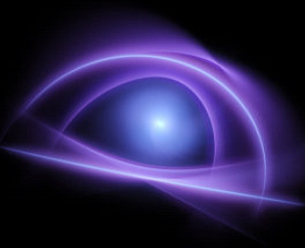 The Out Of This World album is aptly titled, giving the listener an indication of the contents of Bryan’s dreamy music. The synthesizer mixing is very impressive and Bryan leads the way with a Classical and New Age touch, where Electronic, Contemporary, Ambient, and Chill Out, count every beat in unison while examining the incalculable depths of what synthesized music is all about, and what can be formulated from the use of electronic components and just one individual person.
The Out Of This World album is aptly titled, giving the listener an indication of the contents of Bryan’s dreamy music. The synthesizer mixing is very impressive and Bryan leads the way with a Classical and New Age touch, where Electronic, Contemporary, Ambient, and Chill Out, count every beat in unison while examining the incalculable depths of what synthesized music is all about, and what can be formulated from the use of electronic components and just one individual person.
Solaris is the symphonic score for his stunning trip around the universe video that travels past the planets at light speed and then encircle the young star cluster formation Eagle Nebula. Solaris starts the planetary trek at a nice clip and premium up beat tempo, along with a strong atmospheric ambiance that conforms perfectly with the classic space odyssey of a lifetime. While upper keyboard runs first travel beside the lower bass melody in a classic theme, the return melody advances along with a well directed synthesized orchestra, blending nicely with percussion rhythms.
Utopia reaches skyward for the ultimate in beautiful symphony music, creating a divine celestial presentation. Great choir vocals sing in total harmony while the infinite extensions of a synthesizer bend and stretch atmospheric notes far beyond their intended limitations, reaching those lofty sensation textures true connoisseurs of synthesized music know so well, can easily identify when heard, and that recognize the merits of a true art form.
Above and Beyond is also a song title in the 13 tracks on this album, but I reserve this song title to phrase my closing statement of what I expect the future holds for this great New Age artist from Belgium. From what I have seen and heard, Above and Beyond is what we can expect, and you can pretty much count on it.
In the short amount of time it took you to read my review of the Bryan El album Out Of This World, around 768 people were born and 324 have died, making the newly adjusted increase of total world population in just these few short minutes to around 443.
Visit Bryan’s website and sample his music at bryanel.com here or at his CDBaby.com page. Read his profile page at amadearecords.com here and every great musician showcased at Bulgaria based AMAdea Records.
Picture Copyright Big Stock Photo – sgame.
The Summer season has just improved by the release from a music team living in the second largest country in the world. This country shares the longest common border with the United States from East to West then North to South, in a federation comprised of 10 provinces and 3 territories.
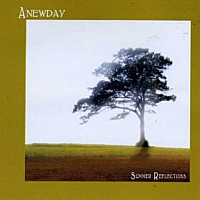 Canada is the geographical location of 2 New Age artists who make up the artist title of Anewday. Their discography includes Autumn Musings, the newest release Summer Reflections plus 2 more are promised to complete the 4 seasons. I have listened to both albums and must say their music is very exciting and everyone should look forward to every release from Anewday since these 2 musicians are more than just a pretty good team.
Canada is the geographical location of 2 New Age artists who make up the artist title of Anewday. Their discography includes Autumn Musings, the newest release Summer Reflections plus 2 more are promised to complete the 4 seasons. I have listened to both albums and must say their music is very exciting and everyone should look forward to every release from Anewday since these 2 musicians are more than just a pretty good team.
Anewday was formed several years ago by Rob Miller and Ron Huestis who now reside in the Southeastern Coastal providence in Halifax, Nova Scotia. Rob composes and plays the piano, while Ron provides the orchestrations, each performing their part in a meeting of minds between these friends who both have roots in Classical music.
This Canadian team’s first album Autumn Musings was nominated for 4 NAR lifestyle awards, ending up in the final round as Best New Artist in 2007, which is not a surprise after listening to their first album with a slightly more Contemporary Piano tone.
Summer Reflections is their current release now making an impact on the public by a beautiful blend of Classical Piano Orchestration in a Contemporary, Celtic, and a great Cinematic influence. There are some interesting angles to this album, having a variety of Orchestra and Piano Instrumental pieces along with some in a light Celtic flavor, in a distinct balance that is pleasing to everyone and many songs that could easily become a beautiful score in the perfect movie soundtrack.
Anewday has done very well with their Summer Reflections. The abundant piano and orchestration gives a variety of moods that transition wonderfully throughout the entire album, giving New Age fans some great music to enjoy this Summer, and the complete 4 seasons in our future.
While the Providence of Nova Scotia is a long distance from the Northwest Passage, many songs made me think of the present ecological changes and political issues occurring in the upper most reaches of Canada, where melting ice packs due to global warming is creating a new expansion for the shipping industry in what was once impassable frozen wilderness.
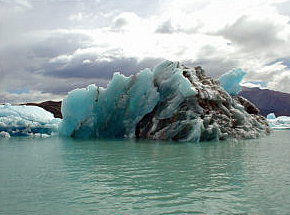 The song Future Beginnings starts with a single piano phrasing in a Contemporary Celtic tone, when measures later, orchestra begins to build then breaks into powerful crescendos with strings and woodwinds.
The song Future Beginnings starts with a single piano phrasing in a Contemporary Celtic tone, when measures later, orchestra begins to build then breaks into powerful crescendos with strings and woodwinds.
Over and over again, then wave after wave of emotion come crashing down in a moderate tempo theme, creating thoughts of ice breaking vessels carving a new trade route in the Northwest Passage, where tidal waves of piano and orchestra movements first break together in strong dramatic sweeps, and then gently give way and flow beside one another in a new harmonious way.
Whispering Streams is a powerful and dignified song, exemplifying the indigenous Inuit people who habitat the Northwest territories in the Arctic Region. Beginning with a wondrous piano scale melody, the Inuit lifestyle, traditions, and culture can be shown by the dignified piano note movements that trickle in upper octaves with calm and solitude.
When full orchestra enters, an element of beauty and danger is notably presented by the evolving tone, sharply contrasting with the natural beauty of the region by strings that echo the piano melody. When the symphonic orchestra begins a dramatic back and forth rhythm in a contrasting melody, a wondrous new element of cinematic intensity emerges while upper octave piano boldly enters, telling of the evironmental hazards that are also present in this narration. The piano movements in the upper most ranges confirm the skills acquired over centuries needed for survival in this beautiful yet dangerous environment in the future Arctic sea route.
Visit anewday.ca by clicking here. Sample at CD Baby, iTunes or Indie Rhythm.
Picture copyright Big Stock Photo – Larspowa.
Composing musician Paul Sills of the United Kingdom has a great New Age album dealing with the relevance of our universal perception of the world as it relates to celestial music.
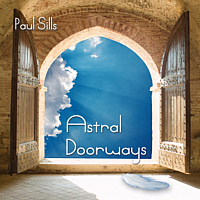 Astral Doorways was Paul’s creative first endeavor that explores the celestial and surreal side of music, where illusion plays a definitive role to permit passage beyond this proverbial threshold. His music seems to arrive at a deeper realm in how we experience synthesizer music.
Astral Doorways was Paul’s creative first endeavor that explores the celestial and surreal side of music, where illusion plays a definitive role to permit passage beyond this proverbial threshold. His music seems to arrive at a deeper realm in how we experience synthesizer music.
Paul’s second album Walking Across Heaven likewise explores our inner imagery in a meaningful way, creating a beautiful sanctuary of sound that arrives at a beautiful music experience. Both albums reflect a celestial or spiritual presence about them, easily fulfilling any dictionary definition of perception as it relates to music.
Astral Doorways on the Medwyn Goodall Music label is a truly powerful album, symbolic of the outer boundaries in synthesized music and simply a must have release for those who love a memorable trek into the territory of unfamiliar sounds. There is no doubt that his fans own both albums, since I couldn’t imagine anyone possessing just one album without the second nearby within easy reach. Both albums are well crafted.
The 12 tracks on Astral Doorways is the metaphorical portal where crossing the threshold of consciousness is achieved through his unique brand of orchestration. This melodic transformation is portrayed by an atmospheric blend of piano, flute, guitar, and choral vocals, where piano key strokes play a primary role in the melody decision making, and choral vocals point out the given steps for safe passage to discover what lies beyond the twilight zone in celestial music.
Perception can be defined as, the conscious neurological process for interpreting sensory stimuli that is derived from intuition or present memory to help resolve or comprehend the present concept in a meaningful way. Like an optical illusion, the music of Paul Sills creates an ever changing phenomenon of sound where what you hear, may be contrary to what your present understanding is of what lies beyond the other side, by skillful layering of synthesized music.
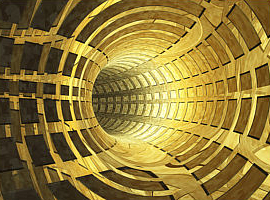 The song Pathway is a monumental first step, starting out with a rhythmic guitar pattern that charts the schematics and steady pace for your journey. The gentle piano melody then starts a graceful stride, reaching a point of calm that resemble secure steps taken along the winding path.
The song Pathway is a monumental first step, starting out with a rhythmic guitar pattern that charts the schematics and steady pace for your journey. The gentle piano melody then starts a graceful stride, reaching a point of calm that resemble secure steps taken along the winding path.
Aglow is a pivotal song where key changes from ivory to ebony are the principal rule, changing mood and thought one keystroke at a time. Gently flowing and deep, peaceful transformation begins to take place during moments of lower octave piano melody, while string orchestra offers an insightful glimpse into the unknown territory ahead.
Angelic Grace is a moving celestial song that gently rises above in tonal qualities. The piano melody is gently released from an earthly grasp, gently floating weightless towards the heavens. Synthesizer orchestration rises into rhythmic flow as strings bring forth what you have just heard into beautiful music upon your arrival into this sanctuary of sound.
An musician interview with Paul Sills is just around the corner. Perhaps he will explain how his personal trademark sound with a powerful yet gentle approach leaves such a monumental impression on everyone.
Sample or purchase music by Paul Sills at Amazon.com. Picture copyright Big Stock Photo.com – truelight.
Aloha! The island state of Hawaii has the unique distinction as a preferred vacation and honeymoon destination in the Continental United States, likewise having visitors from all countries seeking fun in the sun, relaxation, and a memorable vacation experience. Something to consider is how much more pleasurable this extraordinary vacation stay could be with some great island music to enhance and complete the experience.
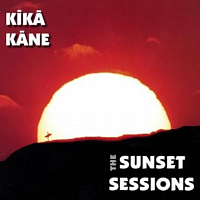 New Age artist Kika Kane, residing in Maui Hawaii is a lifelong resident of this state of islands, atolls, and islets, composing music in the land of what most would consider paradise. While Kika does enjoy an active lifestyle, much of his time is spent playing the easy to recognize, but harder to perfect style of Slack-Key guitar with the island sunsets as his perpetual source of inspiration.
New Age artist Kika Kane, residing in Maui Hawaii is a lifelong resident of this state of islands, atolls, and islets, composing music in the land of what most would consider paradise. While Kika does enjoy an active lifestyle, much of his time is spent playing the easy to recognize, but harder to perfect style of Slack-Key guitar with the island sunsets as his perpetual source of inspiration.
Kika Kane has become pretty popular with his 2 projects that are an adaptation of Slack-Key guitar. Ocean Girl is his first project, while his second release, The Sunset Sessions was nominated for Best Slack-Key album of the year at the Hawaii Music Awards. National Public Radio’s Echoes programming has had several of his songs airing on a weekly basis. Slack-Key is a unique finer style that originated in Hawaii during the 19th century and was developed for dancing and entertainment, becoming more popular when the Hawaiian dance craze began during the 1960’s. Local television and radio have tuned into Kika’s music too, playing many of his songs as music scores in TV commercials and airing in many resorts and hotels on the islands.
The Sunset Sessions is a nicely done blend of Tropical, Ambient, and New Age, with a pleasant mix of mid tempo guitar instrumentals that reward you with pleasant thoughts of island life or in some cases, pleasant memories of your last vacation, if you have ever had an opportunity to visit the islands.
The Slack-Key guitar technique can be loosely defined as a finger style where the musician loosens or slackens the guitar strings by tuning one or more strings, most often upward on the scales until the strings form a single cord, most often in G major.
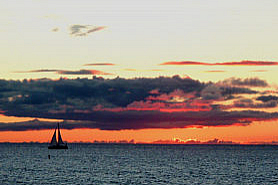 First on the song itinerary is Here Comes The Rain. This song’s welcoming melody makes one feel like an incoming rain event should always be taken in stride. The carefree feeling of island living is shown in this song by a fluid back and forth movement of strumming guitar, that will likely have you swaying to the rhythm. Even if it does rain, brief changes of tempo turn the rain event into positive thoughts considering a colorful rainbow and magnificent sunset display will follow a brief period of rain.
First on the song itinerary is Here Comes The Rain. This song’s welcoming melody makes one feel like an incoming rain event should always be taken in stride. The carefree feeling of island living is shown in this song by a fluid back and forth movement of strumming guitar, that will likely have you swaying to the rhythm. Even if it does rain, brief changes of tempo turn the rain event into positive thoughts considering a colorful rainbow and magnificent sunset display will follow a brief period of rain.
The song A Place In The Sun translates into every fun attraction available to you during your audible visit to the islands by an energetic opening, blending guitar rhythms in a positive upbeat mood, taking well timed breaks during each refrain to allow everyone to soak in the sun. The Sunset Sessions reflects the positive feel, relaxing mood, and welcoming atmosphere, for which this island state is highly prized.
Hawaii naturally offers every form of music, ranging from symphonies, orchestras, and every popular genre of music under the sun, but there is just something special about the authentic home style approach to New Age music Kika has to offer, so be sure to make your next vacation or honeymoon to the islands of Hawaii a memorable one. Aloha!
Visit kikakane.com and sample the album on CDBaby.
Picture copyright Jennifer Keller- and Bigstockphoto.com – Laurzo.
Many artist from all music genres can sometimes resemble a particular tone or feel that sounds like another artist, which can be evident from the very beginning while listening to their music.
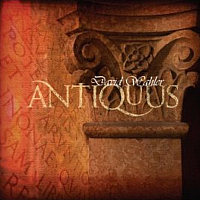 With composing artist David Wahler this is not the case. The New Age Antiquus album, officially released June 1 2009, has some personal trademark qualities not heard in projects from musicians established before him. David points out that this album explores our common heritage through classical compositions, and that each of the 10 songs makes reference to an ancient myth, sacred love, or eternal truth that everyone shares.
With composing artist David Wahler this is not the case. The New Age Antiquus album, officially released June 1 2009, has some personal trademark qualities not heard in projects from musicians established before him. David points out that this album explores our common heritage through classical compositions, and that each of the 10 songs makes reference to an ancient myth, sacred love, or eternal truth that everyone shares.
Beginning music as a young adult, David Wahler moved to formal music studies in college, and then to the theater, directing several productions while performing with the Rockford Symphony Orchestra, and New American Theater.
The Antiquus album has attracted attention in the Netherlands in particular and is featured on New Age Soundscapes with Music Choice premium services. David also has a sense of giving, devoting himself and his time teaching music to handicap and disadvantaged children, in a worthwhile cause he found personally rewarding, and this is something I would like to recognize about him publicly.
The Antiquus album debut has been described as New Age Ambient, Neo Classical, and Electronic, but let’s also add Orchestra and Chill Out, since they can also be used as reference adjectives to describe his material. Provoking many emotions, the mood is thoughtful and ever changing by the insertion of a light and airy feel at times, that then shift towards deep and mysterious surroundings as the measure bar in the sheet music moves into the next measure of the page.
With this goal in mind, David Wahler has managed to produce a debut album that appears to stand alone in personal style and form, creating a model as an artisan would create a grand sculpture adorned with touches of gold, and crafted entirely out of sound.
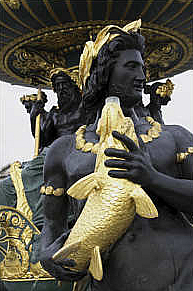 The Antiquus album does explore our ancient past to unveil our present in an unfamiliar way by incorporating a layering and mixing of piano, strings, flute, violin, and percussion in a mysterious, yet classical way.
The Antiquus album does explore our ancient past to unveil our present in an unfamiliar way by incorporating a layering and mixing of piano, strings, flute, violin, and percussion in a mysterious, yet classical way.
Choral vocals reinforce his approach in style, echoing a graceful and poetic feel, while also shining bright by a deep, thought provoking mannerism that seems to stand out from the very beginning.
With this goal in mind, David Wahler has managed to produce a debut album that appears to stand alone in personal style and form, creating a model as an artisan would create a grand sculpture adorned with touches of gold, and crafted entirely out of sound.
The mood is indeed very dreamlike and relaxing by a modern tempo rhythm that uniquely offers a positive connection by retaining interest and imagination throughout the entire album.
Shifting tempo and key changes are what I believe give this album an effective transition in thought and feeling, linking the valuable bond between our very distant past and our ever changing future.
Visit davidwahler.com to sample this music collectable.
Picture Copyright Bigstockphoto.com.

John P. Olsen, New Age Music World host and contributing author for newagemusic.nu has conducted an interview with Australis, composer and producer Oscar Aguayo. Drawing imagination from experience in his homeland and earliest life changing events, Australis is a mixture of New Age, Electronic, Ambient, Neo-Classic and Ethnic, in contrasting genres. Together there is a fine emotional depth in all of his releases that portray a wonderful contrast in individual expression.
Oscar Aguayo’s first album entitled Lifegiving was compiled from his earlier recollections as a young adult and portrays ethnic pathways leading towards a deep emotional expression, where each of the 10 songs blend into an intricate canopy filled with rich colorful instrumentation.
The second Australis release entitled The Gates of Reality is a beautiful mixture of contrasting genres in a fine balance of emotional depth in all 14 compositions. This release is based on individual concepts, and how perceptions affect our personal understanding of the world around us. The gates of Reality took 3 years to complete. We are pleased to present this interview to fan of Australis, and our site visitors.
Interview with Australis;
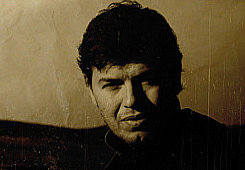 John Olsen : Would you tell us about yourself and your musical background?
John Olsen : Would you tell us about yourself and your musical background?
Oscar Aguayo : I was born in Peru a few decades ago, the oldest son in a family where music-playing was part of everyday life. My earliest memories are crowded with images of my mother at home playing the guitar while singing, and the alien mixture of emotions I experienced from those songs. You see, my mother’s songs weren’t children songs designed to expose children to a reduced, predigested set of emotions. Instead, she used to sing “adult” songs that dealt with all feelings, most of them completely unknown to me at three years of age.
I think about this frequently. Judging by how deep those memories are anchored in my mind and by the unique taste they still have to me to this day, I have to assume that although my conscious mind was confused by the unknown feelings conveyed by my mother’s singing, my subconscious must have been breathlessly making associations, creating patterns; interpreting the meaning of those melodies from what I perceived in my mother’s voice and facial expressions, experiencing brand new emotions not from life but from her music. Whatever the explanation may be, since as far as I can remember I experience music as a language born from emotions with the purpose of transmitting those emotions to others.
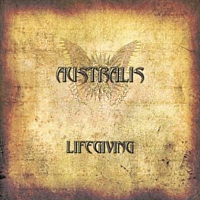 John : You currently have 2 New Age/Neo-Classical albums available for purchase. Lifegiving from 2005 and your most recent, The Gates of Reality from 2008. What awards and recognition have you received from these 2 projects at present?
John : You currently have 2 New Age/Neo-Classical albums available for purchase. Lifegiving from 2005 and your most recent, The Gates of Reality from 2008. What awards and recognition have you received from these 2 projects at present?
Oscar Aguayo : Lifegiving earned me the “Morpheus Music 2004 Best Independent Artist” early in 2005. Several tracks from it have been selected to be included in several compilations from the US and Europe; and additionally, the entire disc was licensed for re-release and distribution in Asia by an international label. The Gates of Reality is still too new to have earned any awards to this date, although it is already reaching the same level of popularity of its predecessor. I have to admit, however, that no award or recognition can compare to the fulfillment experienced when you learn that your music has touched somebody. No public award can match that kind of personal satisfaction.
John : How would you describe your music to someone not familiar with your very unique style of music?
Oscar Aguayo : That’s a very good question because every person understands music in their own terms. Everybody tries to come up with names and words to define music, everybody tries to define its genres and to delimit styles within those genres despite the fact that music is unique to each person. So, how to describe my music when my description represents only my personal perceptions ?
Even when in the most broad level my music falls within what we currently know as New Age/Ambient, I still want to avoid sub-categorizing it. Instead, I would try describing it by its intentions: to challenge the mind and captivate the heart, to seduce the listener to explore their own emotional universe, to provoke their imagination and awaken their memory. With that as a foundation, I would add a brief description of its acoustic elements: an amalgam of spacious evolving pads, seductive exotic rhythms, evocative atmospheres and aromatic melodies. Then I would finish adding that my music is composed as a reaction to whatever emotional stimuli I am experiencing at that moment. In other words, each track originates as a response to a real feeling or set of feelings I am going through.
 John : Could you explain the circumstances or reasons for becoming a musician, and why you choose New Age music over all other genres?
John : Could you explain the circumstances or reasons for becoming a musician, and why you choose New Age music over all other genres?
Oscar Aguayo : In all truth, I am a latecomer. You see, although I was exposed to music since birth and developed an intimate relationship with it since very early in my life; mine was a conservative family. The world of professional music was perceived – and with good reason – as a morally risky environment and therefore my parents never encouraged me on that direction. It wasn’t a stern prohibition, of course, and I was still able to compose music and create a few bands during my teenage years, gaining stage experience and musical proficiency along the way. However, the idea of pursuing a professional career as a musician was never serious at home, and even years after I moved out to live by myself, I never saw myself as one. That was until my father passed away eleven years ago.
Without going into details, all my perspectives changed after that event. The meanings of every aspect of life shifted under my feet and I started to discover that many of the things I thought were important, actually weren’t; and that many areas I took from granted and regarded as trivial were actually the ones that give substance to life. In the middle of this process, as things were falling into their new places it became clear to me that music was much more than just a fun hobby. I found there was so much to say through it, but so far I had never taken it seriously enough. That’s when I started considering composing and producing music professionally.
To answer the second part of the question, I don’t think music genre is as important as the messages and the emotions you as a composer want to convey. And since the range of human emotions is so wide, choosing New Age was more of an evolutionary process than an intentional one for me. I’ve composed in many different genres since age 12. It’s my personal opinion that New Age is the only musical genre that doesn’t impose creative parameters on the composer. In that sense, I think New Age is the less defined genre of all, providing the composer with an unmatched freedom of musical expression.
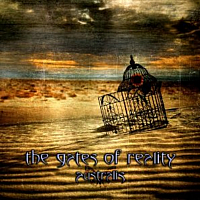 John : Since genre is not as important to you, than the emotions you want to inspire for your listeners, What emotions can one expect to feel from your music?
John : Since genre is not as important to you, than the emotions you want to inspire for your listeners, What emotions can one expect to feel from your music?
Oscar Aguayo : This is an interesting question. At the beginning I assumed my listeners would experience the same emotions I experienced when composing a particular piece. If I felt specially moved by something, I would translate those feelings into a musical piece and was sure that whoever listened to it would be moved in similar ways. I’ve learned soon that is not the case, though. The truth is that every person has their own unique emotional structure, and although we all coincide on the generic emotional levels, our interpretation of more specific emotional stimulus is very personal. So, even when I can speak about the emotions I convey through my music, I am simply unable to speak about the emotions listeners will experience from it. Of course, there’s nothing extraordinary in my emotions.
They are the same we all experience: the many contrasts of love; our enduring hopes; the deep fears of our times; the numberless little joys of everyday life. The passion in our hearts; our endless curiosity; our desire to explore and to find things bigger than ourselves. The darker angles of our souls can’t be excluded: our shortcomings and selfishness; the secrets we keep only to ourselves. My music originates from all of these emotions. On the listeners’ side, I will always defend their freedom to experience my – and all – music in their own unique ways, to extract from it the emotions their hearts need and enjoy.
John : Can you describe what your albums are about, or can you share what thoughts and experiences from your homeland come to mind for each of your 2 albums: Lifegiving & The Gates of Reality?
Oscar Aguayo : Lifegiving is a free compilation of the varied tracks I composed when I redefined my own musical intentions. It felt so incredibly good to musically express myself in complete honesty that I let myself go. In fact, the album’s title came from the concept of a birth, an act of giving and receiving life. The result is an album where each track is its own little world.
 In contrast, The Gates of Reality is a more intentional work. In 2005 I finished Lifegiving very aware of the role imagination plays in our daily lives, very interested in how our unique perceptions affect our personal understanding of the world around us. Love, hate, hope, desolation, peace, war, faith, disbelief; all of our emotions are the result of our perceptions, and our perceptions are the result of the interaction between intellect and imagination. It quickly became a set of concepts worth of exploration. It took me three years to finish.
In contrast, The Gates of Reality is a more intentional work. In 2005 I finished Lifegiving very aware of the role imagination plays in our daily lives, very interested in how our unique perceptions affect our personal understanding of the world around us. Love, hate, hope, desolation, peace, war, faith, disbelief; all of our emotions are the result of our perceptions, and our perceptions are the result of the interaction between intellect and imagination. It quickly became a set of concepts worth of exploration. It took me three years to finish.
John : Oscar, you have said in the past that music has the ability to break political and social barriers. I understand your comment somewhat, but what exactly did you mean by that?
Oscar Aguayo : I mean that beneath our external labels we all need the same things. We may not speak the same language, we may live within countries in conflict with each other, we may have inherited the external characteristics of a particular race, we may belong to particular social groups and sympathize with particular political points of view. But no matter how different or incompatible we could seem to be towards each other, we all have a heart that feels and loves, that fears and hopes.
That’s where music plays a unique role. We may be unable to speak to each other, we may find ourselves unable to overcome our external labels – of race, of patriotism, of ideology – in order to communicate with each other in good faith; but we are all susceptible to music. We may come from centuries of injustice, or from ephemeral conditions of privilege; but we are all vulnerable to music because music ignores the superficial areas of the human condition and goes straight to the deep ones, the ones that are common to everybody. In this sense I’ve had the honor of having personal communication with listeners from both sides of armed conflicts and with listeners from religious groups incompatible with each other; and share their thoughts and dreams and hopes, all as a consequence of music.
I think as a sentient species, we are still very primitive. Our technology may be very advanced and our knowledge very vast; but we still have to learn the basics. We are able to take a humans beings to the moon, but we are unable to feed the poor in our own cities. We have harnessed the power to destroy our own home planet, but we are still ignorant on how to live in peace among ourselves. Yes, we are very primitive. And it will be a very long time until we learn the basics. Fortunately, we have music to help us blur the many imaginary lines that separate us from us.
John : Recently a fan of yours posted a comment on my review of The Gates of Reality, and said; “Let me comment that this (Australis) is one of the best musicians I’ve ever heard.” Since this person will likely be reading this interview too, how would you respond to the person who posted this comment?
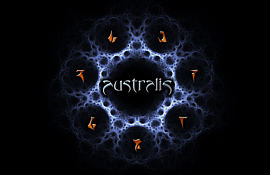 Oscar Aguayo : I would start expressing how deeply honored those warm words make me feel. I would want that person to know how grateful I am that my music appeals to their soul and that they took the time to express that on your review.
Oscar Aguayo : I would start expressing how deeply honored those warm words make me feel. I would want that person to know how grateful I am that my music appeals to their soul and that they took the time to express that on your review.
Nothing motivates the independent musician better and deeper than knowing his/her music has moved somebody. It is a concept hard to explain unless one understands what “independent” means in the music industry.
If you compare the world of professional music to an ocean, an independent – in other words, “unsigned” – artist is someone who sets to cross the Atlantic on board of a minute canoe. While “signed” artists make the same trip on board of a cruise with a crew of people paid to drive the boat, the independent musician is usually alone and depends absolutely on his/her own devices. Most likely, he/she won’t make it; but he/she tries nonetheless. His progress, if any, will be discouragingly slow. The independent musician must absolutely love what he/she is doing, otherwise who would voluntarily decide to embark into such an unfavorable endeavor?
That is why comments like the one you mentioned are so meaningful to the independent musician. They make you realize you are not alone in the middle of a dark ocean on a reduced piece of wood keeping you afloat, but that you in the company of countless other human being sailing their own dark oceans by themselves. Suddenly everything takes deeper meanings and you know you are in the right path; all because of comments like those.
John : Is there anything you would like to tell our readers that I have not asked or brought up during our interview?
 Oscar Aguayo : Only that I appreciate very much this opportunity to share with you and all your many readers my personal impressions about so many subjects. As I tried to say earlier, the listener is what makes all the difference for the composer. Believe me, I’ve composed private music for decades. It is only when the composer interacts – musically or verbally, like through your interview today – with the listener that everything starts to make sense.
Oscar Aguayo : Only that I appreciate very much this opportunity to share with you and all your many readers my personal impressions about so many subjects. As I tried to say earlier, the listener is what makes all the difference for the composer. Believe me, I’ve composed private music for decades. It is only when the composer interacts – musically or verbally, like through your interview today – with the listener that everything starts to make sense.
On that subject, let me invite all of your readers to visit Australis official website for the newest material and latest news, at: AustralisMusic.com. Also, I’ve finally opened accounts on Facebook and on Twitter where behind scenes details are posted several times a day. Please feel free to drop by and say hello. John, again, thank you very much for inviting me. You can also read my New Age Music World pages dedicated to Australis. Photos are courtesy australismusic.com.
Oscar Aguayo, having the artist title Australis, is a fine musician I have written about and interviewed in the past. His 2 albums Lifegiving & The Gates of Reality are both excellent choices for New Age fans who enjoy top quality music.
 Lifegiving was compiled from his earlier recollections as a young adult and portrays ethnic pathways leading towards a deep emotional expression, where each of the 10 songs blend into an intricate canopy filled with rich colorful instrumentation.
Lifegiving was compiled from his earlier recollections as a young adult and portrays ethnic pathways leading towards a deep emotional expression, where each of the 10 songs blend into an intricate canopy filled with rich colorful instrumentation.
The Gates of Reality is a mixture in contrasting genres in a fine balance of emotional depth in all 14 compositions. Based on individual concepts and how perceptions affect our personal understanding of the world around us, this album took 3 years to complete.
The in-depth interview with Oscar Aguayo and my album reviews for Lifegiving & The Gates of Reality can be read at our page dedicated to Australis. Oscar is working on his third album and songs can be heard when subscribing to his newsletter, plus behind the scenes details about Australis projects can be found daily at his Facebook & Twitter pages.
Visit AustralisMusic.com to sample or purchase and find at his CDBaby.com page. Below is my Australis review quote giving you a hint of Oscar Aguayo’s fascinating orchestrations, along with the song video Essentia.
Australis is a New Age artist title that treks into the mysterious sub-genre lands of Ambient, World, Electronic, and Neo Classical, having ethnic pathways with deep emotional expression, where each song blends into an intricate canopy filled with rich colorful instrumentation.
In the very beginning, 6 million square miles of rain forests exist worldwide but because of relatively recent deforestation, only 2.6 million square miles remain. What is really alarming is that this major deforestation took place within the past 50 years. It is estimated that over 85 % of the species of animals, plants, and microorganisms now remaining in these vital ecosystems will be destroyed by the year 2020, with increasing timber losses of 56,000 square miles each year.
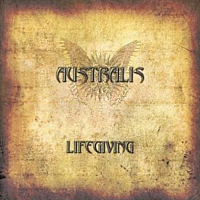 Oscar Aguayo is the musician with the artist title of Australis. Oscar is one among many persons who has first hand knowledge and shares this environmental concern about the rain forests, having been born and raised in a tropical rain forest region of the Amazonian Basin in Peru, South America. While Oscar presently resides in America, his 2005 electronic album Lifegiving makes reference to this complex political and social question involving our rain forests around the world.
Oscar Aguayo is the musician with the artist title of Australis. Oscar is one among many persons who has first hand knowledge and shares this environmental concern about the rain forests, having been born and raised in a tropical rain forest region of the Amazonian Basin in Peru, South America. While Oscar presently resides in America, his 2005 electronic album Lifegiving makes reference to this complex political and social question involving our rain forests around the world.
Australis first album Lifegiving is a New Age music endeavor that steps into a lush undergrowth in the mysterious sub-genre land of Ambient, World, Electronica, and Classical, with Ethnic music pathways.
The electronic music of Australis finds deep emotional expression, where each discovery blends into an intricate canopy filled with rich colorful instrumentation. The 10 songs on Lifegiving which represent his personal insight, are portrayed on this album using careful craftsmanship that in turn introduces a strong emotive content that exists beyond any cultural, political, or geographical limitations.
This unique excursion begins with the title song Lifegiving, where faint chirping of jungle soundscapes ascend slowly into the lush surroundings. The single key piano notes then sketch an image of dew drops from the jungle canopy, falling onto dense tropical vegetation below. The deep recesses of secluded terrain are soon lit by violin and string interlude that together emerge to install thoughts of dusk like visibility. While glancing upward, small fragments of sun beams penetrate the full tree tops above, changing your perspective on the time of day. Slowly as the song starts to fade, total darkness begins to descend around you, bringing with it soft audible animal chants while they return to their nightly song ritual.
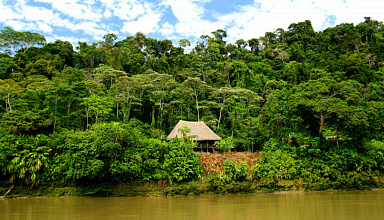 The Enchantment is a song rich in orchestral diversity with lively strings and woodwinds engaging in a native dance full of tempo and key changes that both excite and captivate those who have entered this mysterious land of musical enchantment.
The Enchantment is a song rich in orchestral diversity with lively strings and woodwinds engaging in a native dance full of tempo and key changes that both excite and captivate those who have entered this mysterious land of musical enchantment.
Sacred Earth is an upbeat Ethnic song that explores the inner boundaries of this earthly sanctuary largely responsible for our life giving resources of medicine, water and air that we breath. While woodwind, flute, and piano play a colorful fragrant harmony, exotic instruments lend their perspective sovereignty, giving this song a unique essence. The bongo drums, woodblock, and abundant percussion claves enhance this song by an indirect border, giving it a deep tribal influence without overriding the primary melody.
Oscar Aguayo’s brother Alvaro lends his talent by playing an exotic 10 string Charango in this song, adding refinement and warmth to the experience. The song ends by fading into a soft forest rainfall, leaving you with a collective memory of your musical excursion filled with creativity and interest on this album, and our life giving rain forests worth saving.
In a conservative estimate, over 6000 life giving trees in our rain forests around the world were lost during the short amount of time it took you to read my Lifegiving album review.
An interview with Oscar Aguayo of Australis will be published soon, so that you may get the facts behind this amazing artist. You may read about the latest Australis album – The Gates of Reality review and visit AustralisMusic.com. Sample the album at CDBaby. Picture copyright Bigstockphoto.com – gtrmtt84.
The acclaimed Jazz producer, composer, and performer Royce Campbell has released a New Age music project on the Moon Cycle Records label titled, Ear of the Beholder. While over 30 Jazz albums can be found titled under his name as lead or co-lead, the artist title Eucalyptus Dream is what you should look for when shopping in the New Age music section.
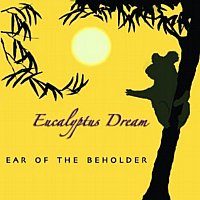 This is a first for Royce Campbell who honored a request from his friends in the medical and healing profession to provide some music for people to relax with during their patient therapy sessions.
This is a first for Royce Campbell who honored a request from his friends in the medical and healing profession to provide some music for people to relax with during their patient therapy sessions.
This is quite a change of pace for Royce considering that during his 35 year career as a musician he has toured with the likes of Marvin Gaye, while also touring 19 years with award winning film composer and musician Henry Mancini.
The large number of legendary Jazz musicians he has performed with is just too numerous to list. Knowing his professional profile and having performed with this vast amount of talent from another genres, we gladly welcome Royce with open arms and can now proudly claim him as an honorary New Age artist.
Royce Campbell’s credits as a Jazz musician list 11 albums on U.S. Nationwide charts, with 4 in the top 10. With so much experience and success in Jazz, this leap into New Age music might be difficult for some people.
For Royce Campbell this apparently is not the case here since those 35 years of experience and a broad music career have obviously eased that transition. Royce explains a focus on the composing aspects, rather than just performing as a guitar soloist was the right approach with this change in genre album.
The Ear of the Beholder by Eucalyptus Dream is a debut where it is pretty clear Royce Campbell takes New Age music just as seriously as when performing in his familiar Jazz style.
 Multiple influences abound while a landscape of picturesque thoughts rise to the surface, allowing the listener to relax and take in Royce Campbell’s style at their own pace sometimes with, but mostly without his usual guitar. The result of this daring transition is a successful leap into New Age.
Multiple influences abound while a landscape of picturesque thoughts rise to the surface, allowing the listener to relax and take in Royce Campbell’s style at their own pace sometimes with, but mostly without his usual guitar. The result of this daring transition is a successful leap into New Age.
This first album by Eucalyptus Dream is great in the fact that the music is truly New Age, having synthesized ambient rhythms, guitar, flute, choral vocals and some great percussion effects that are composed without the repetitiveness found in some music of all genres. Much of the album blends Western, Eastern and modern influences in a nicely composed ambient blend, easily surpassing the request of relaxing music his friends in the medical profession were looking for, and so much more.
It is unknown to me whether the artist title Eucalyptus Dream was chosen because of the abundant medical uses scientist’s have discovered in the more than 700 Eucalyptus tree and plant species. Perhaps that is the reason since the therapeutic dose of relaxation qualities found on this album are safe, reliable and effective, which does support that possibility.
His music website is roycecampbell.com – Sample the album on CDBaby
Picture copyright Bigstockphoto.com – ozflash.
Terri Liles Mason is the creative spirit behind the peaceful music that involves a pronounced focus on honoring and celebrating the universal principals of positive feminine living and mother earth.
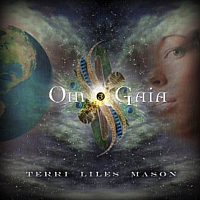 In her first release entitled Om Gaia, Terri Liles Mason puts a reflective focus in expressing oneself in a positive manner to increase self image through music. Teaching in workshops devoted to inner peace and harmony from her home in Connecticut, her expertise and knowledge in this subject is only reinforced from her educational background, which she in turn, instills into Om Gaia. Everything now becomes one, when devoting her expertise and knowledge as a teacher, into positive influential music as composer and performer on her debut album.
In her first release entitled Om Gaia, Terri Liles Mason puts a reflective focus in expressing oneself in a positive manner to increase self image through music. Teaching in workshops devoted to inner peace and harmony from her home in Connecticut, her expertise and knowledge in this subject is only reinforced from her educational background, which she in turn, instills into Om Gaia. Everything now becomes one, when devoting her expertise and knowledge as a teacher, into positive influential music as composer and performer on her debut album.
Terri’s music is creating quite a sensation internationally, having performed before a large audience in the recent Earth Day opening in New York City’s Grand Central Station, where she introduced herself and the Om Gaia album.
Another reason for her to celebrate is the over 120 online radio stations playing her music around the world, a #4 spot on the World Radio Top 100 chart, and 3 songs retaining the #1 Top New Age songs with Indie Music charts for 12 weeks. The 3 songs holding that position are title song Om Gaia, Begin Again, and Eleyakeha’s Lullaby.
Terri Liles Mason’s music is creating quite a sensation internationally, having performed before a large audience in the recent Earth Day opening in New York City’s Grand Central Station, where she introduced herself and the Om Gaia album to the world. Terri Liles Mason’s first album reflects her focus of expressing oneself in a positive manner to increase self image through music.
 The title song Om Gaia is a positive blend of mid tempo instrumental rhythms that are surrounded by Terri’s beautiful vocals, sung with an apparent soft and sensual touch.
The title song Om Gaia is a positive blend of mid tempo instrumental rhythms that are surrounded by Terri’s beautiful vocals, sung with an apparent soft and sensual touch.
Mother earth is celebrated by inspiring thought filled lyrics, announced to all by her beautifully deep and rich blending of vocals, instilling thoughts of an ancient realm in our distant past that transforms into the present.
Begin Again is an upbeat song with a pleasant mix of vocals, while Eleyakeha’s Lullaby is a slower paced celestial song featuring Terri’s soft vocals that seem to lull you into a contented frame of mind sure to please anyone.
Looking toward the future, this New Age artist has achieved much in transforming her teaching skills and positive vibes into a vibrant musical journey that she has just offered the world. I expect we will hear more from Terri.
Visit omgaiamusic.com and find Om Gaia at CDBaby, Amazon or iTunes. Picture Copyright Big Stock Photo – nsilcock.
Note: Terri Liles Mason was nominated Best New Artist by the worldwide broadcasters of Zone Music Reporter, and Terri’s Om Gaia album received nomination for Best Relaxation/Meditation CD and Best Vocal CD at ZMR in 2009.
Australian composer and pianist Fiona Joy Hawkins has 4 award winning projects at present. Her most recent Blue Dream album is successful in placing an exclamation mark after her name when recognizing Fiona’s outstanding abilities and claim to fame in international status.
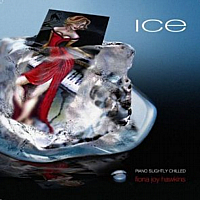 Fiona Joy Hawkin’s many achievements include charting at #1 on World New Age radio charts spanning 9 countries, Best Piano album in the NAR Lifestyle Music Awards in 2006, and as finalist in 2 genres in the Los Angeles Music Awards in 2007. Fiona also won an award in the Classical/Jazz category in the Music OZ Awards in 2008, and after being a finalist 5 times, she ranked finalist in 4 categories including Album of the Year in the NAR Awards in 2009.
Fiona Joy Hawkin’s many achievements include charting at #1 on World New Age radio charts spanning 9 countries, Best Piano album in the NAR Lifestyle Music Awards in 2006, and as finalist in 2 genres in the Los Angeles Music Awards in 2007. Fiona also won an award in the Classical/Jazz category in the Music OZ Awards in 2008, and after being a finalist 5 times, she ranked finalist in 4 categories including Album of the Year in the NAR Awards in 2009.
Ice: Serve Slightly Chilled is innovative, dynamic and bold, confidently stated by yours truly. With an inventor’s approach, Fiona Joy Hawkin’s Ice composition is patently administered on her Steinway Concert piano as a new musical prototype. What impressed me the most was a momentary departure from her exceptional, yet more Contemporary albums that won her claim to fame. Portions of the Rock overtones present in this album challenge some of our basic assumptions of the term Piano music. Another concept is a transition in the way Rock music has been perceived in the past, creating a new approach in the way we view the term Rock music.
It is on the Ice: Serve Slightly Chilled release where Fiona’s patent innovation in New Age, Contemporary piano begins, charting an adventurous course in the way a musician blends Classical New Age, Popular, Chill Out, Jazz, World and Rock. With an inventor’s approach, Fiona patently administers a new music prototype on her Steinway Concert piano.
The Ice album discloses more than an improvement made to a existing musical product. Fiona takes an inventor’s approach in redefining the fundamental basics of the way we perceive Piano and Rock music.
 The 10 songs on Ice are issued titles with an icy thermodynamic theme, setting the spine chilling mood in motion by providing a mid tempo application of classic New Age Chill. The song Iced Rain discloses a trademark Fiona Joy Hawkins piano arrangement, yet grants an exclusive design concept by applying a mixture of genres and unique instrumentation.
The 10 songs on Ice are issued titles with an icy thermodynamic theme, setting the spine chilling mood in motion by providing a mid tempo application of classic New Age Chill. The song Iced Rain discloses a trademark Fiona Joy Hawkins piano arrangement, yet grants an exclusive design concept by applying a mixture of genres and unique instrumentation.
While Aboriginal Didgeridoo echoes an indigenous woodwind call to the wild, ebony and ivory piano keys appear to reach an entire range of octaves to establish a new dimension in piano music that is spine tingling. Thunderous percussion unites with electrified guitar to diagram the upbeat momentum for this ground breaking discovery by commingling Classic piano and Rock music into a single entity.
Cloud Chill is a song innovation that starts out as a meteorological weather advisory on the horizon when native Didgeridoo once again reverbs an ancient voice into the past, present, and future. Fiona’s epic design in piano rhythms then integrate with electric guitar, blending into musical matter cool enough to penetrate what we term Rock music.
Fiona Joy Hawkin’s novel piano composition first finds a crack and expands, breaking the solid barrier of Rock music from a familiar genre, shattering what was once a large form of music into tiny little pieces into a new music entity. The Ice project discloses more than just an improvement made to a prior existing musical product. Fiona takes an inventor’s approach in redefining the fundamental basics of the way we perceive Piano and Rock music.
The 2 songs I just described titled Iced Rain and Cloud Chill are playing on our Stars Radio so that you may hear this invention in music for yourself. You may also read my review of her latest album titled Blue Dream, and then discover the online art gallery and music website of fionajoyhawkins.com.au. Picture copyright Bigstockphoto.com.
Classical Orchestral Harps can be thought of as divine or celestial instruments, having an origin dating to around 2500 BC, often reminding one of angels and religious cherubs posed in a holy statue. The harps early origins are ironically thought to be modeled after an archery weapon since the bowed arch with strings strongly resemble a bow and arrow.
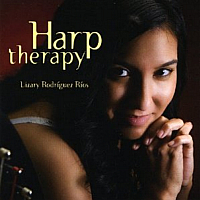 Lizary Rodriguez Rios, residing in Tucson Arizona performs and teaches the classical harp professionally, in a career where there is no doubt her masterful quest for perfection is musical in nature.
Lizary Rodriguez Rios, residing in Tucson Arizona performs and teaches the classical harp professionally, in a career where there is no doubt her masterful quest for perfection is musical in nature.
She has 2 albums designed with therapy and healing in mind, promoting a relaxing mood by the soothing gentle breeze of sound this string instrument with an ancient origin can provide.
Lizary Rodriguez Rios achievements are very impressive, securing a Doctorate in Musical Arts and 4 time prize winner of international harp competitions around the world, also touring with the Grammy Award nominated Harp Fusion Ensemble.
Her first album Harp Voyage has received critical acclaim from prestigious classical magazines, while also drawing attention around the world as a harp soloist and composer for the ensemble.
Lizary Rodriguez Rios achievements are very impressive, securing a Doctorate in Musical Arts and 4 time prize winner of international harp competitions around the world, also touring with the Grammy Award nominated Harp Fusion Ensemble. Lizary Rodriguez Rios is a dedicated harp professional.
 Harp Therapy is her second CD release in 2009, designed for those peaceful periods of musical serenity. Her music is purposefully composed for relaxation, massage, and yoga, while also finding a useful niche since the songs serve as the perfect auditory background music during church services, memorials, hospitals, and even wedding events.
Harp Therapy is her second CD release in 2009, designed for those peaceful periods of musical serenity. Her music is purposefully composed for relaxation, massage, and yoga, while also finding a useful niche since the songs serve as the perfect auditory background music during church services, memorials, hospitals, and even wedding events.
Lizary Rodriguez Rios solo performances have other professional musicians playing cello, violin, guitar, with nature sounds and background Atlantic Ocean side tides of Puerto Rico. The 15 songs have many recognizable favorites including Scarborough Fair, Jesu Joy of Man’s Desiring, and Pachelbel’s Canon. Some original works are also present as the first song Purple Bamboo starts with a healing crystal bowl during the opening portion of the album. Both albums are truly relaxing, offered by a dedicated person who has pretty much devoted their life to music.
For professional harp music for relaxation or special occasions visit lizary.net. Copyright Bigstockphoto.com – ReplayAll.
